Argentina, Part 2: Across the Central Region
— Argentina — 9 min read
November 21 - 28, 2010
With all my trip chores and bike maintenance done, it was time to begin a big loop around the southern half of South America. From Buenos Aires, I headed for southern Bolivia and then would turn south for Patagonia and return to Buenos Aires. I lined up people to stay with through CouchSurfing all through Argentina until I got to Bolivia.
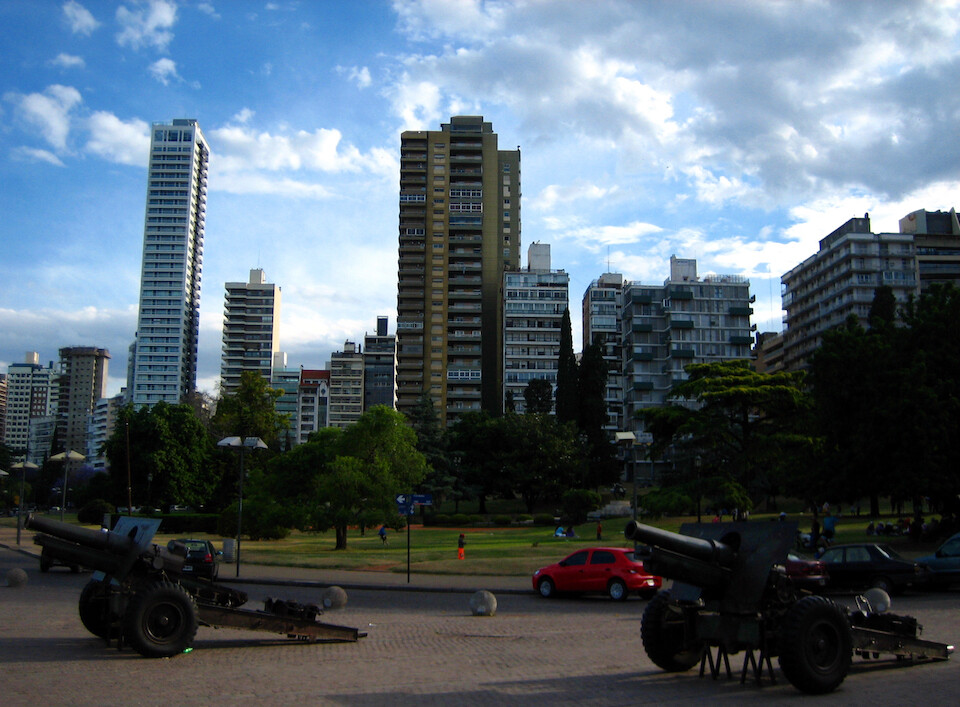
300 kms north of the capital is Rosario, considered the second city of Argentina, feeling like a smaller Buenos Aires.
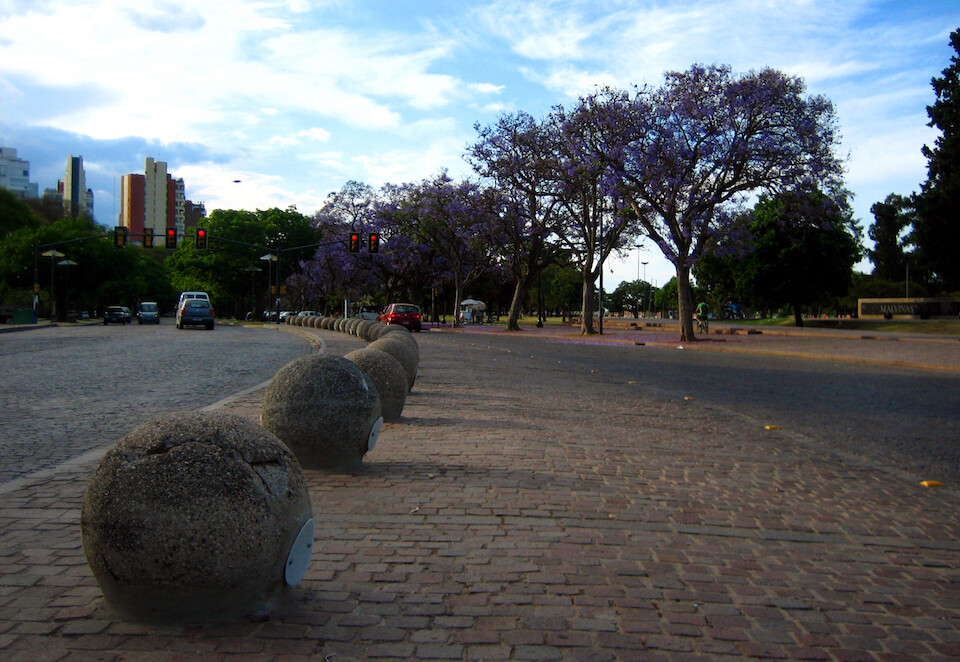
A pleasant city to walk around, it's also the birthplace of Che Guevara.
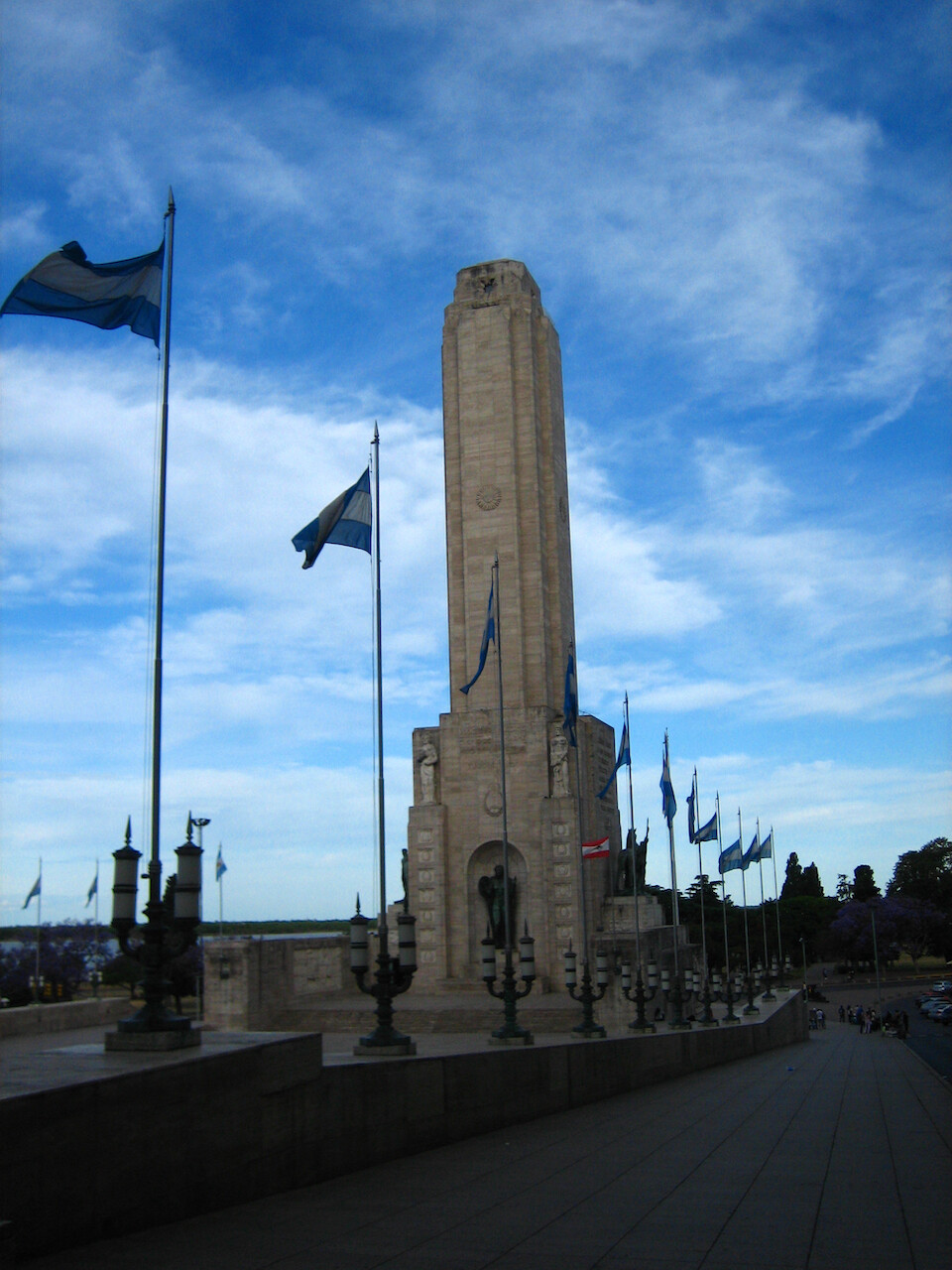
The Monumento Nacional a al Bandera, the national monument to the flag of Argentina and it's not hard to see why blue and white are the primary colors of this big-sky country.
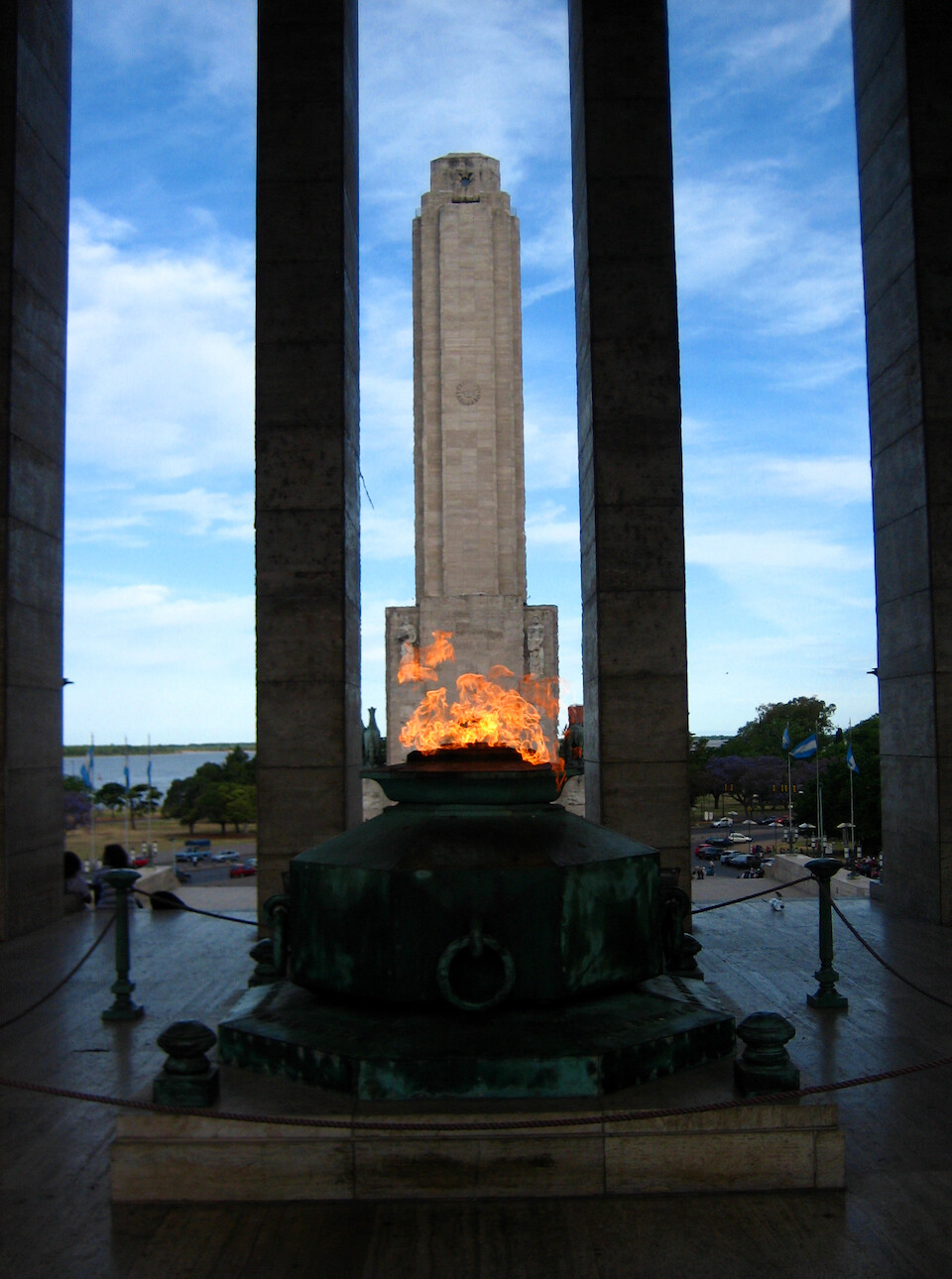
An eternal flame in the plaza.
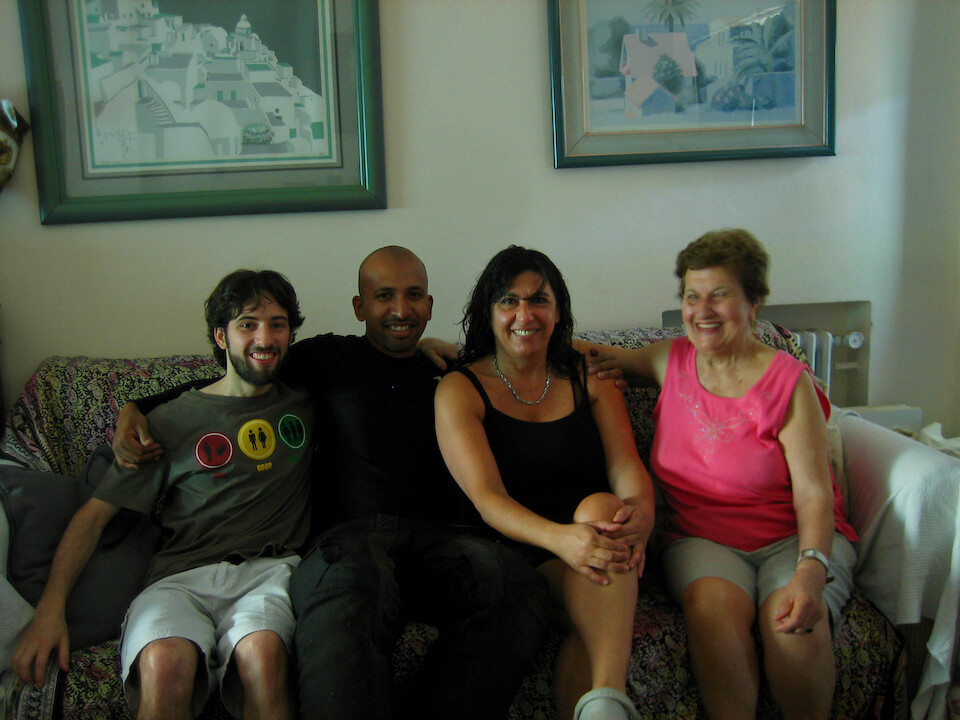
I spent two days with Gabriel and his family. He's a linguist and is currently studying German. We had some good discussions on Anglo-Saxon grammar compared to Latin-based languages. His mother shared some stories about how more and more farmland is being devoted to soybean production due to its increased demand around the world, but ignoring the damage this crop does to the land.
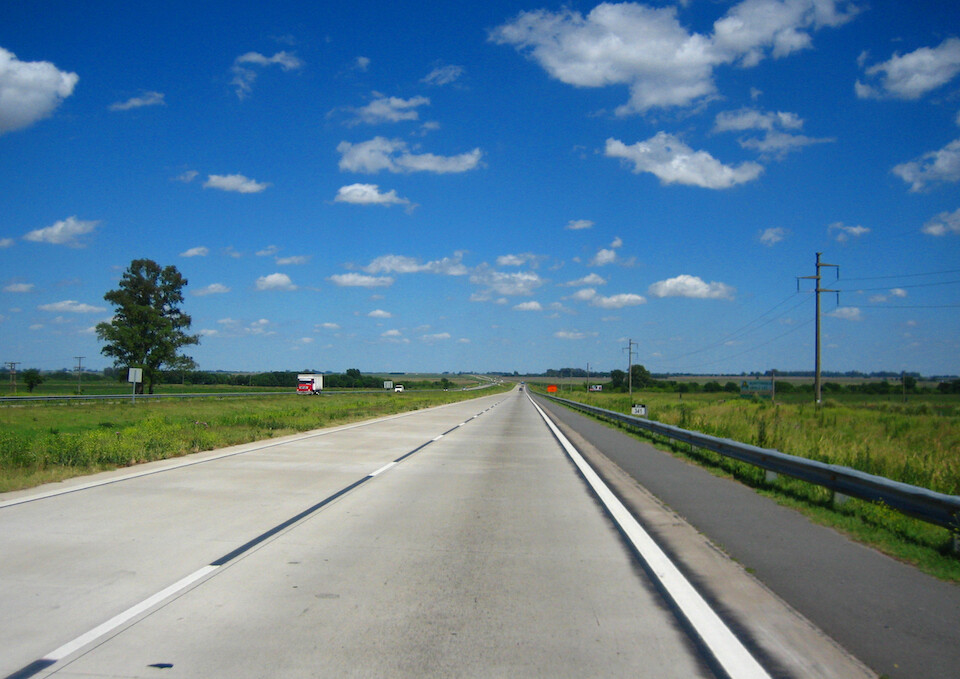
Heading west across concreted dual-lane divided freeway to Cordoba, 420 kms (260 mi) away.
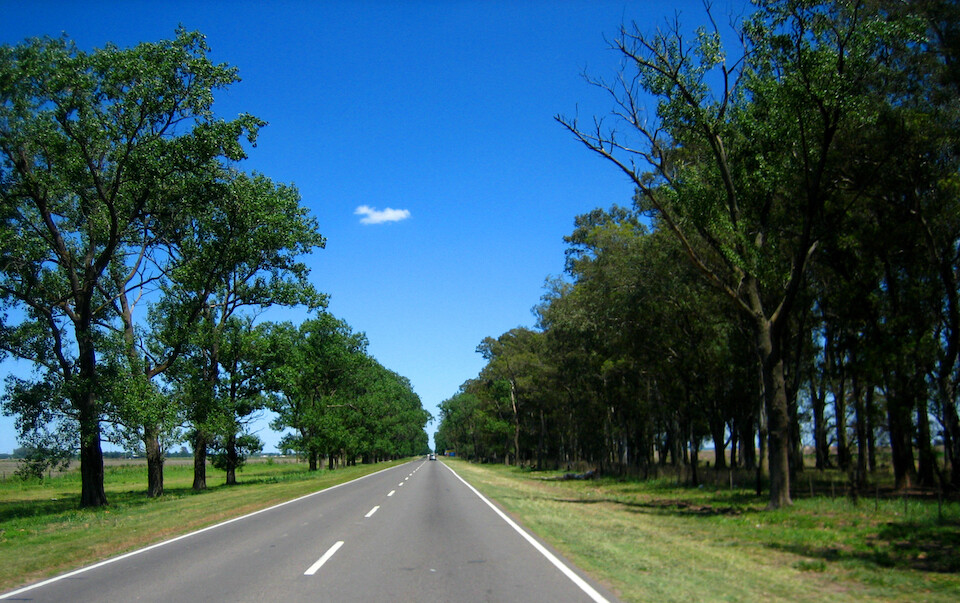
The flat farmland, part of the economic belt that runs across the central band of the country is punctuated by aesthetically-placed tall trees.
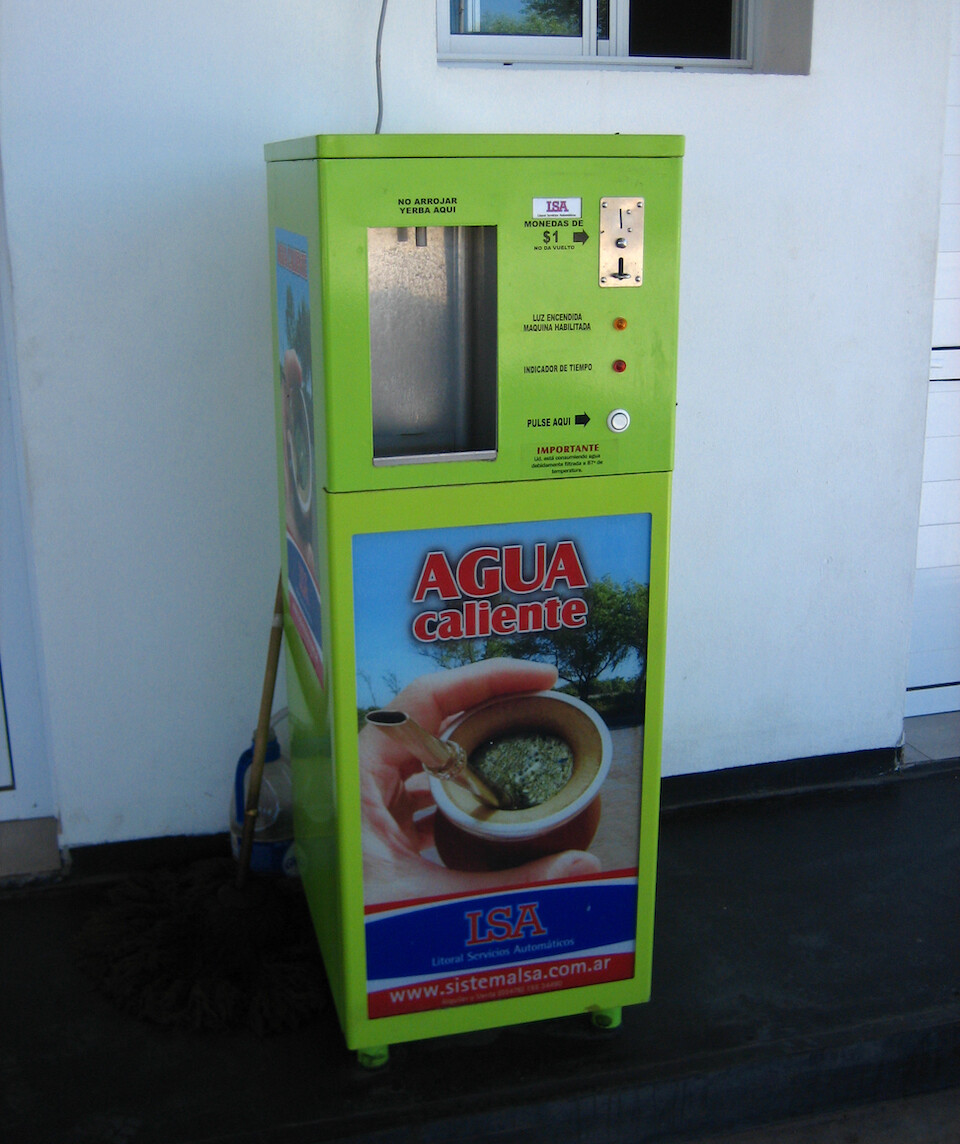
The culture of yerba maté is widely associated with Argentina and Uruguay and its importance shows through with dedicated hot water dispensers at all petrol stations.
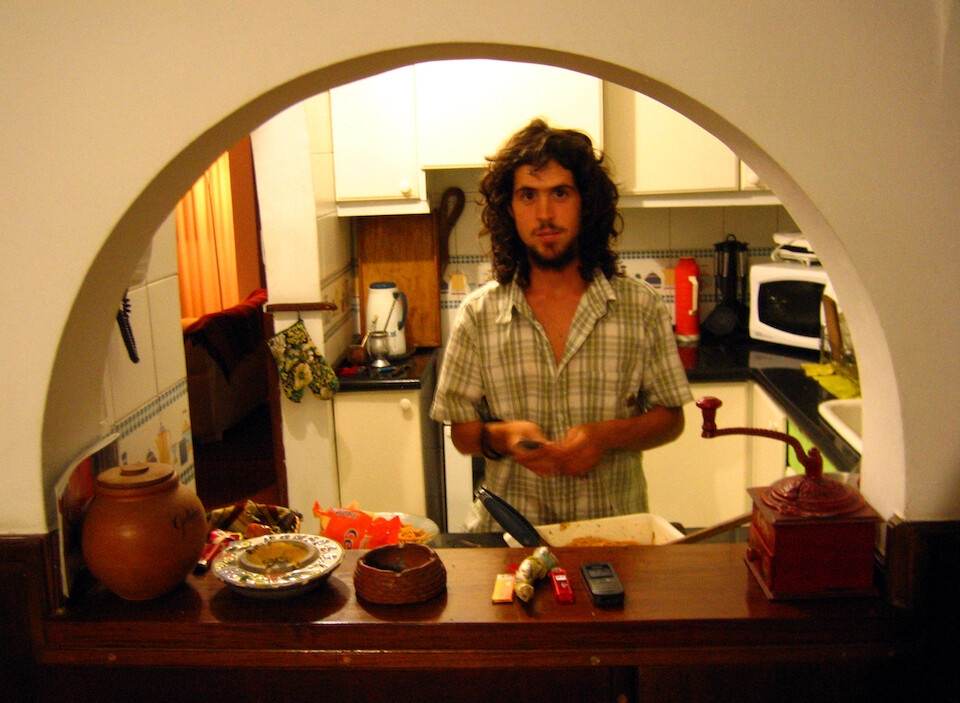
I had planned to stay with a girl named Rosario in Cordoba but she had to make a last minute trip to BA, so her friend Marco here said he'd take care of me.
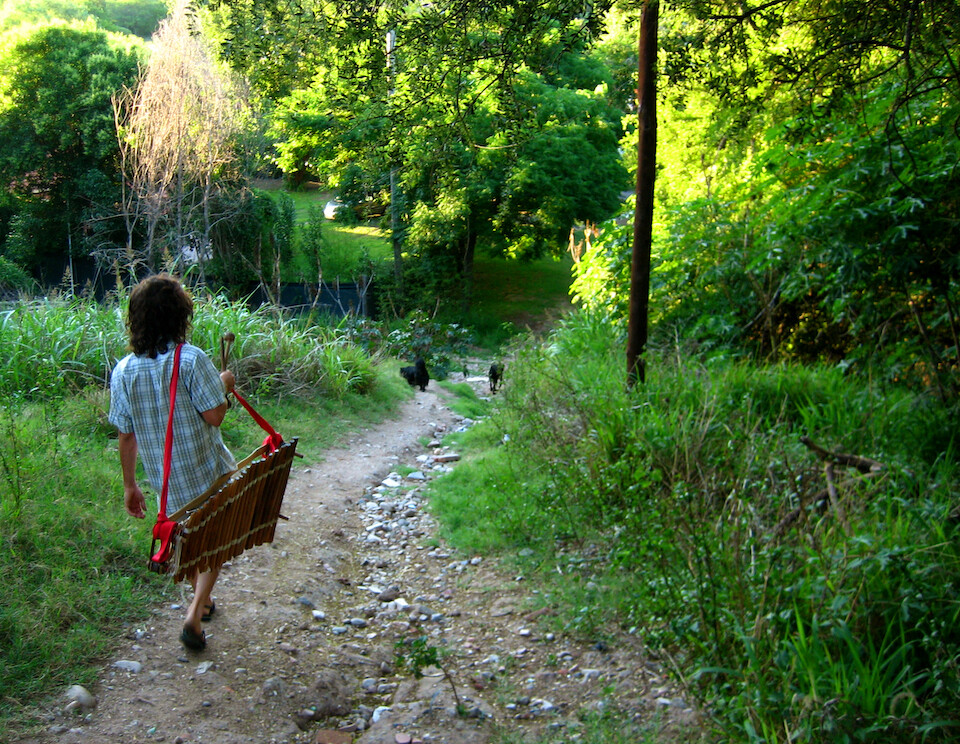
Soon after arriving, we headed down to a park by the river.
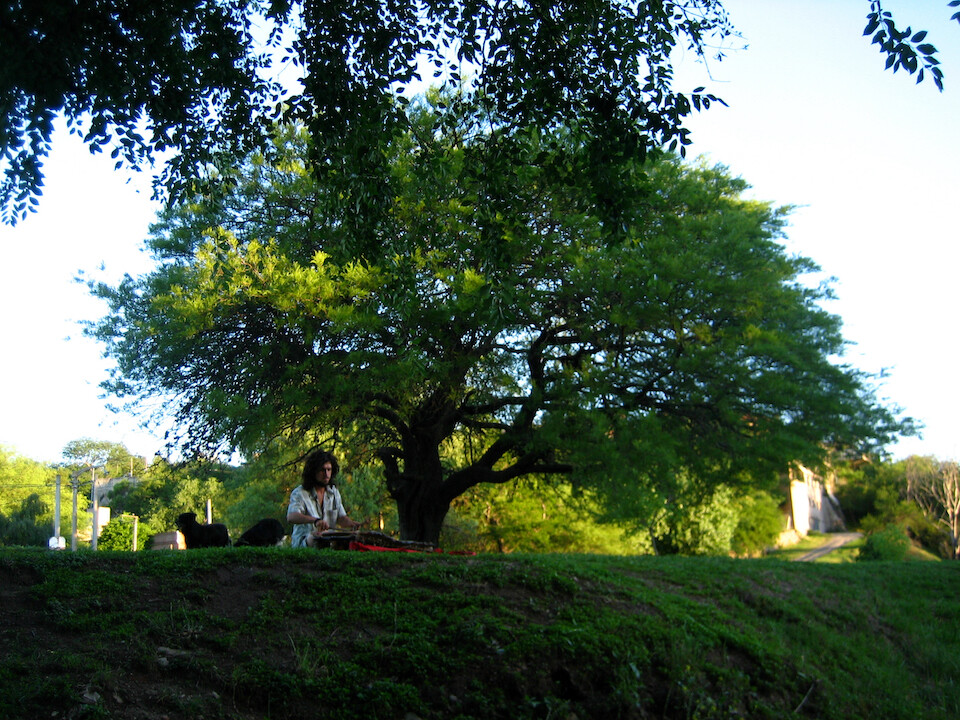
Marco said he comes out here to play instruments in the open.
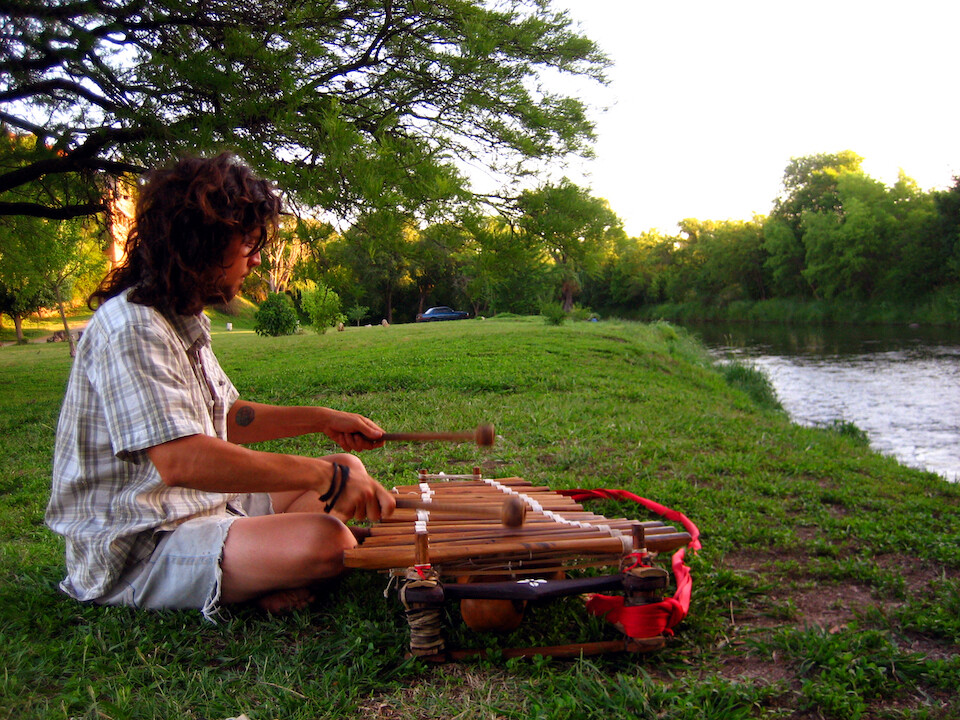
This xylophone produced warm, rich tones that sounded just right for dusk with flowing water and lots of greenery.
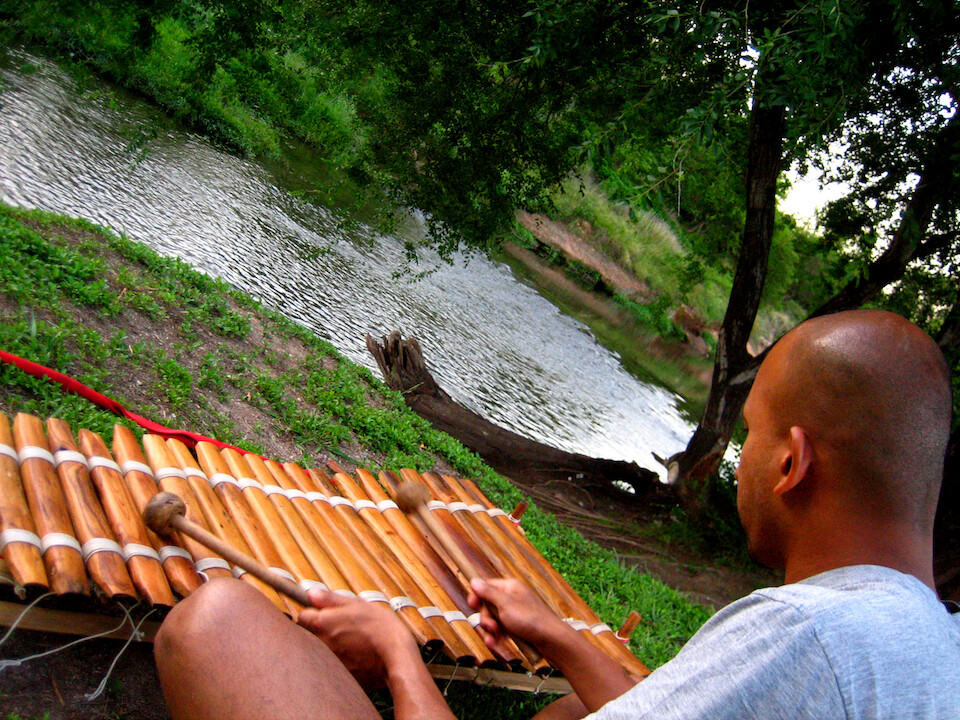
I'm telling you, there's nothing more relaxing than playing a harmonic, wooden instrument on the banks of a river after a long days ride.
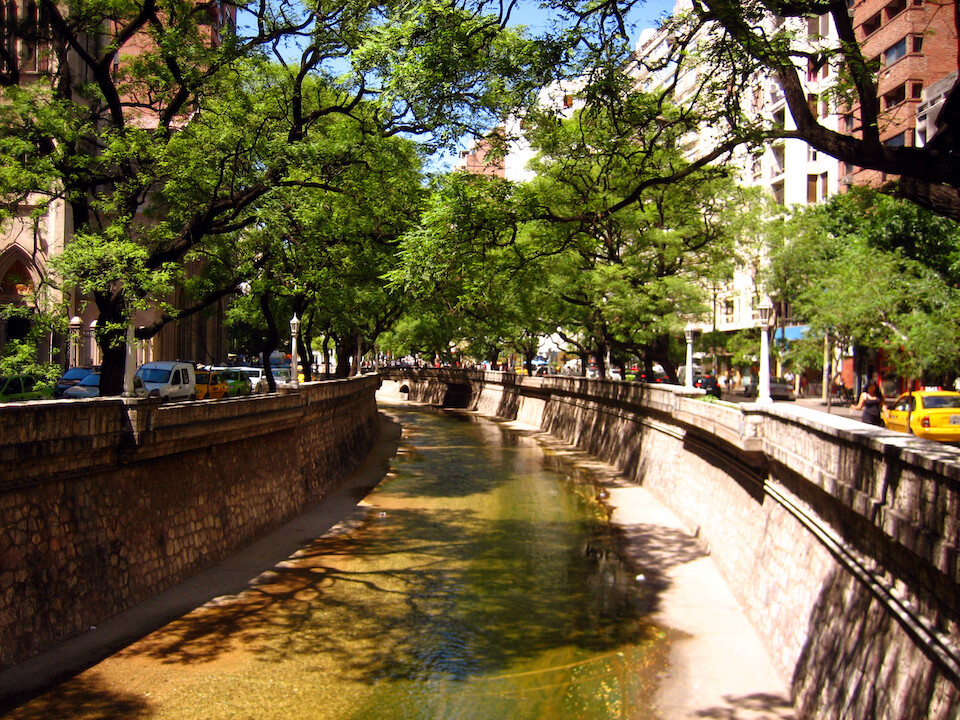
The next day, we had a look around the city. A canal yearning to be filled.
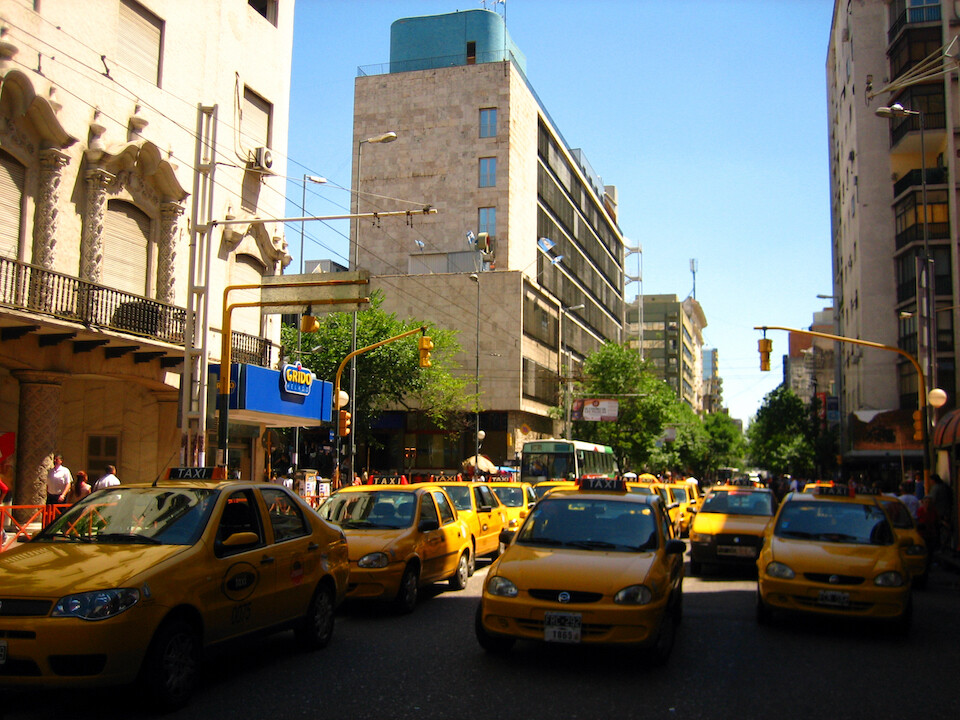
There was a strike by the taxi driver's association and they blocked traffic into the city center.
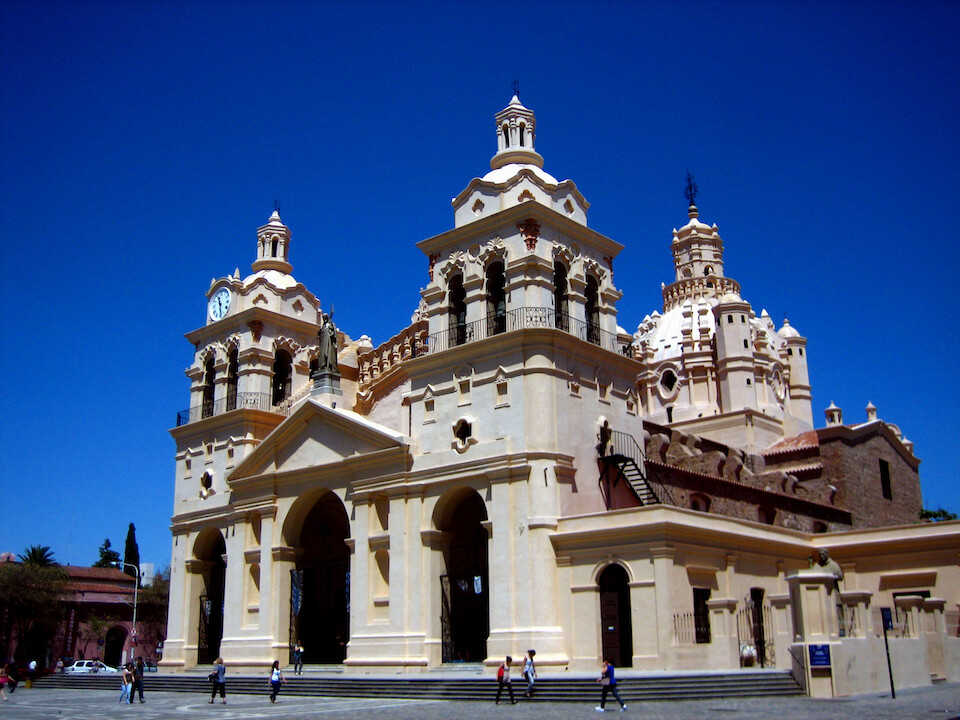
But it was such a nice day to walk around. This is the main cathedral and it's a mix of different styles. The older, brick parts are from when this was a Jesuit church. They were a group of missionaries that pre-dated the Spanish colonialists, forcibly converting the indigenous to Christianity.
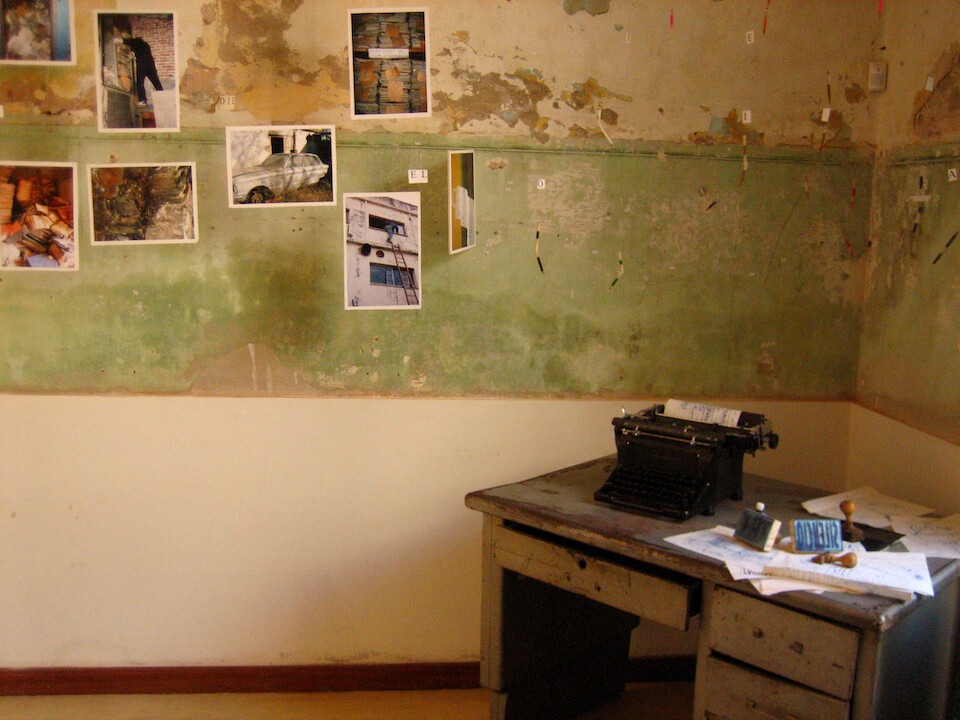
At the Museo de la Memoria, which pays homage to the victims of the Guerra Sucia (Dirty Way), the military government's campaign in the late 70s and early 80s against civil dissent.
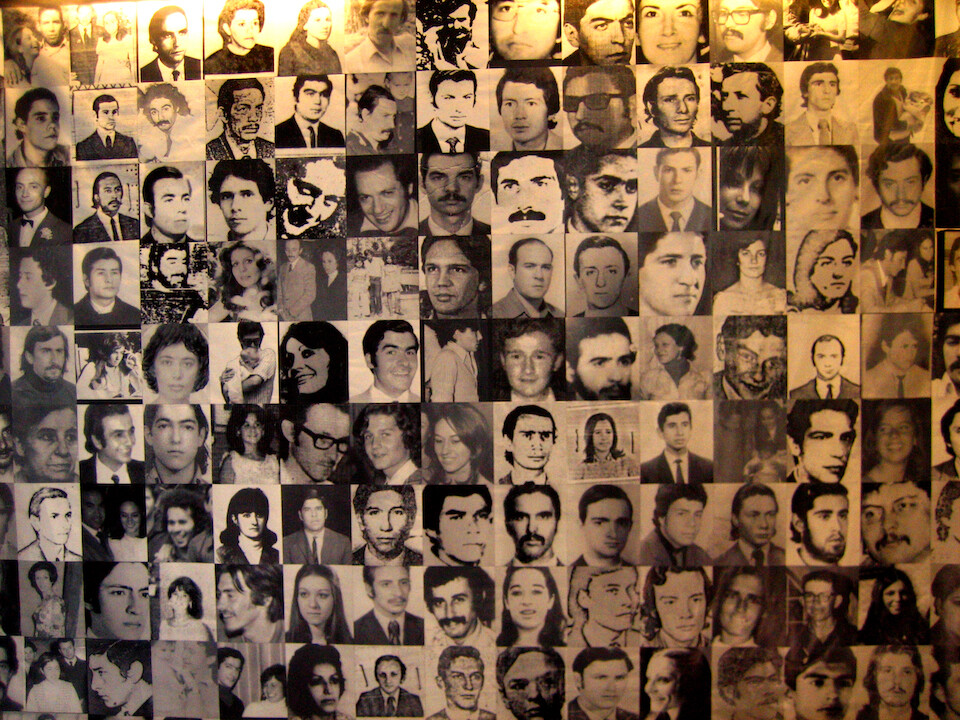
About 30,000 Argentines are said to have 'disappeared' in a program the dictator, General Jorge Videla called El Proceso (or the Process of National Reorganization) where anyone talking bad about the military was questioned and most likely tortured and killed. As expected, young, educated liberals were the primary target, also because they were the primary constituents of a revolutionary guerrilla group called the Montoneros who were against foreign businesses in their country and the elites in power.
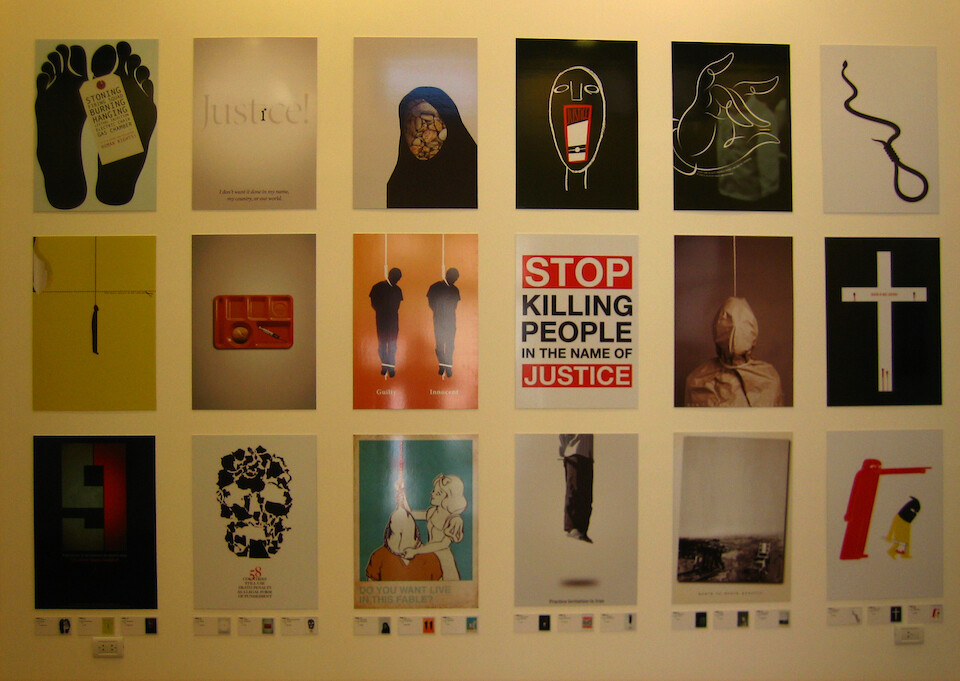
A wide array of human rights abuses were conducted in the name of justice and the museum conveyed the message through photographs and graphic art.
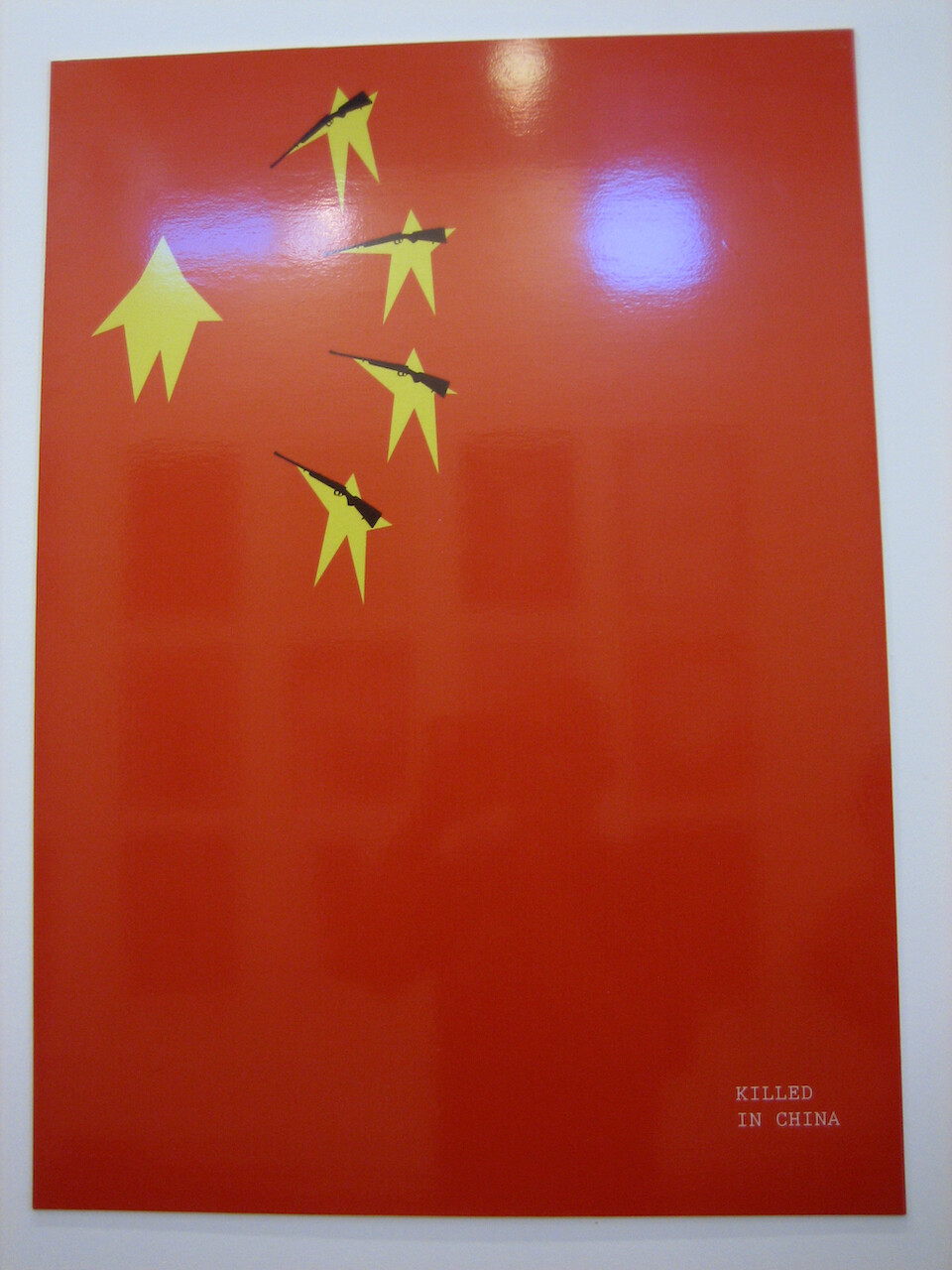
Surpassing what happened in Argentina, the art had something to say to all purporters of human rights abuses.

Since humans first discovered their ability to manipulate other beings, the quest for absolute power has yet to be quenched. I think universal access to the internet and its democratization of information will lead our population into an era where power-tripping by individuals over others will be seen as something in our barbaric past.
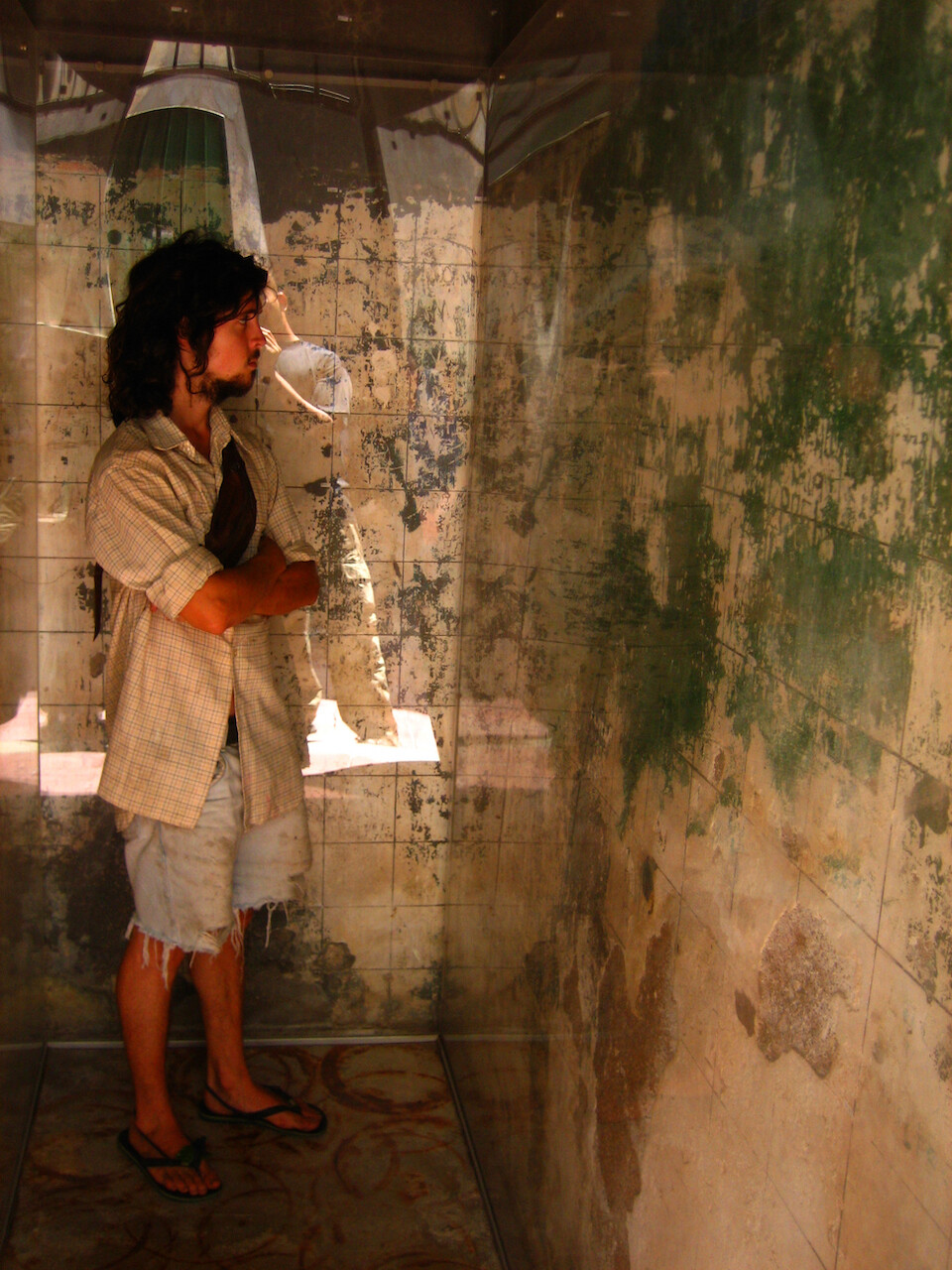
The museum is set in a former detention, torture facility and the walls of cells still hold the scratched messages of detainees.
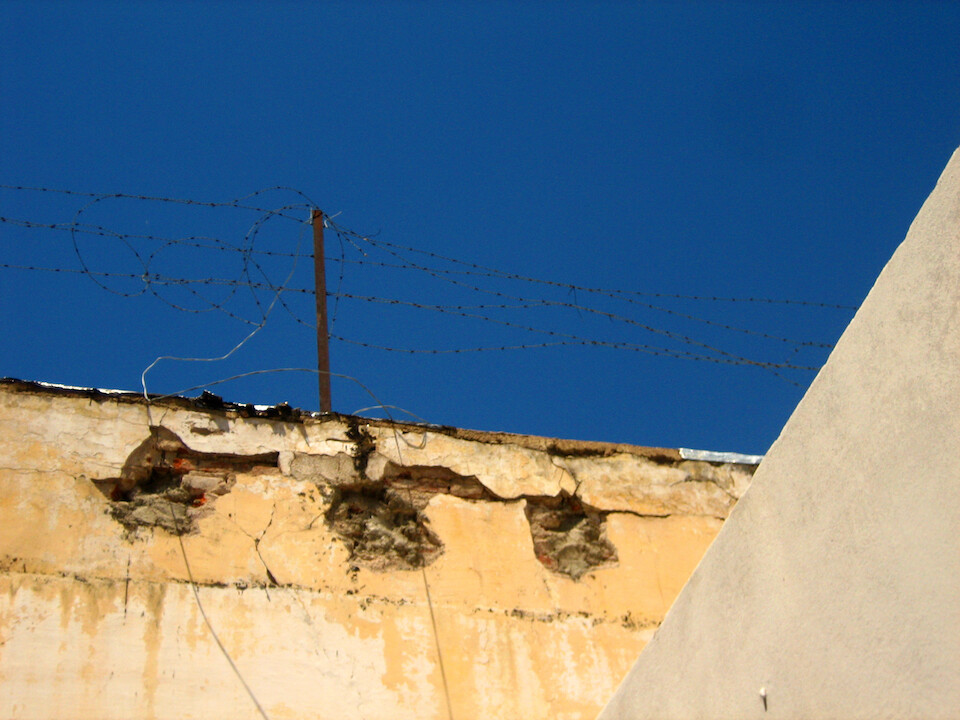
It was a period in their history that Argentine's today say set their development behind their more successful neighbors of Chile and Brazil, who also endured military dictatorships during the same period, but with outcomes leading to strong economic growth, as opposed to the collapse of the Argentine economy in the early 2000s.
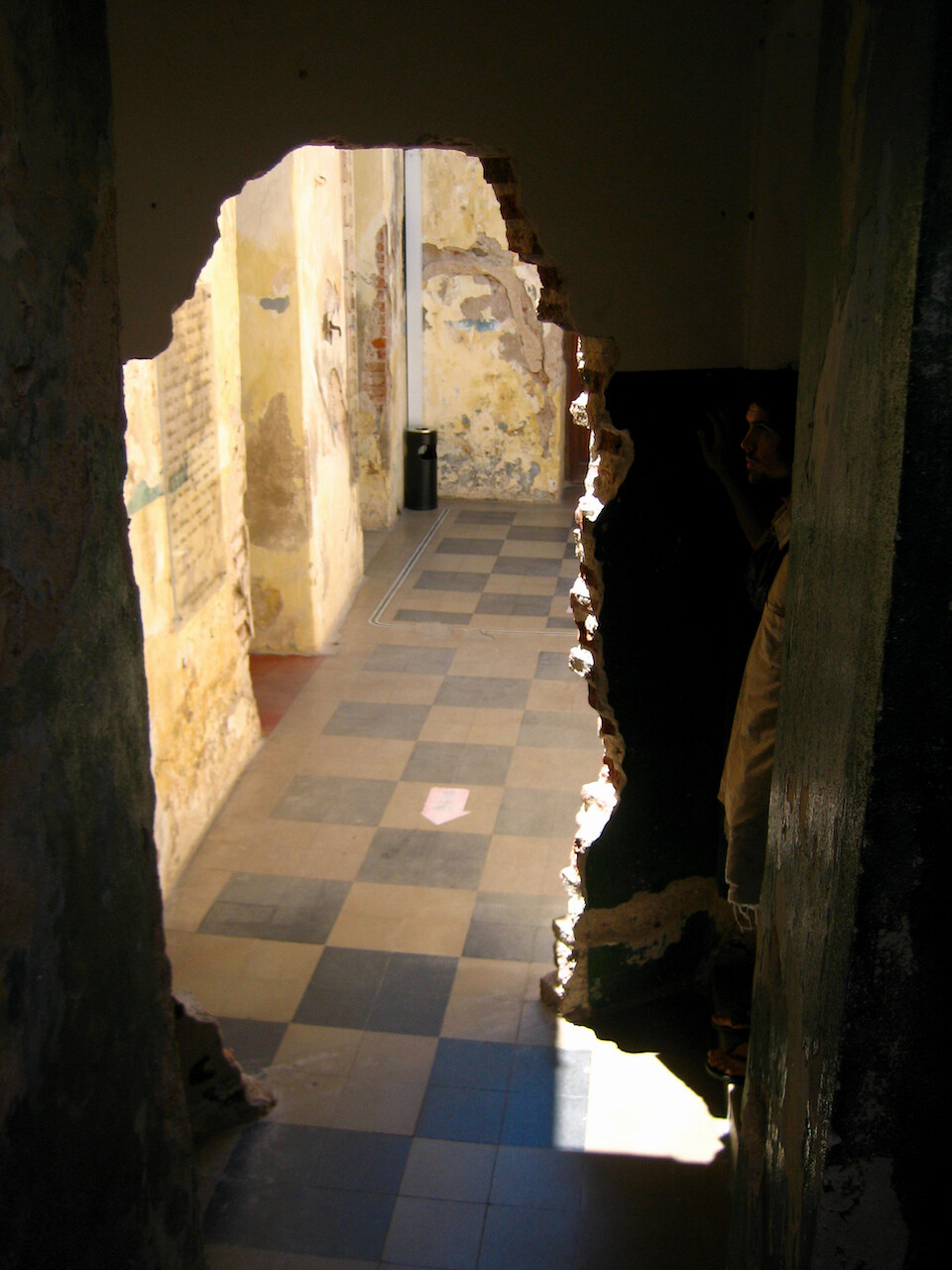
The Dirty War finally ended with the humiliation of the military after their failed attempt of trying to take back the Falkland Islands from the British in the early 80s.
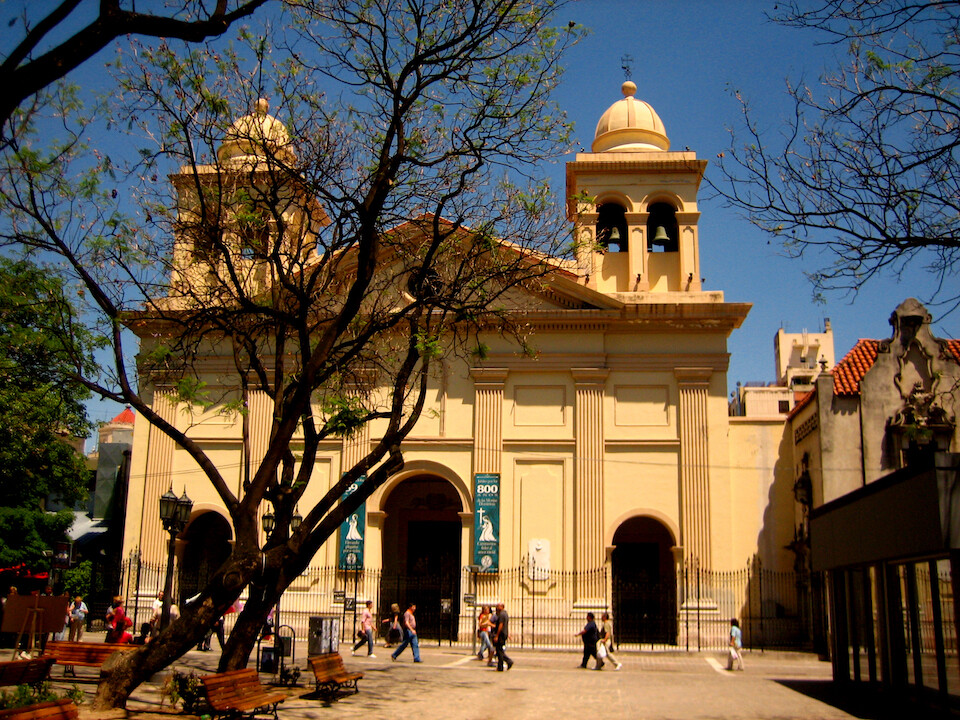
Emerging back into the sunshine, there's plenty to be happy about in Argentina today.
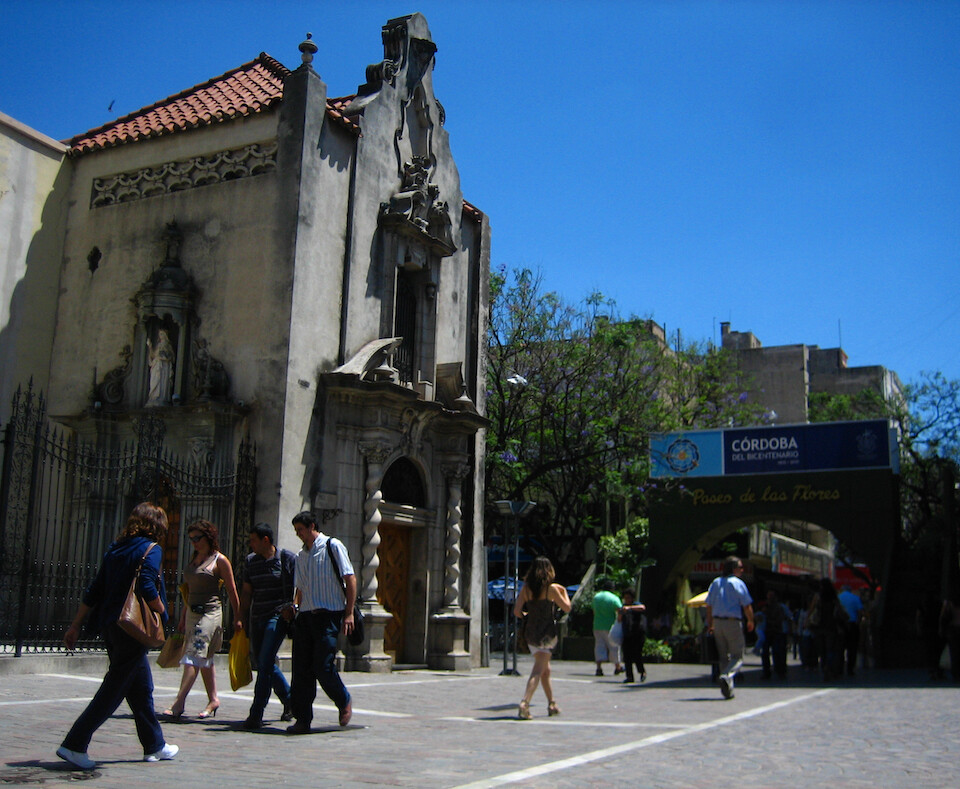
Cordoba's center is quite pleasant and people-watching all the more interesting with the generally good-looking populace, aided by the buzz of the large student population.
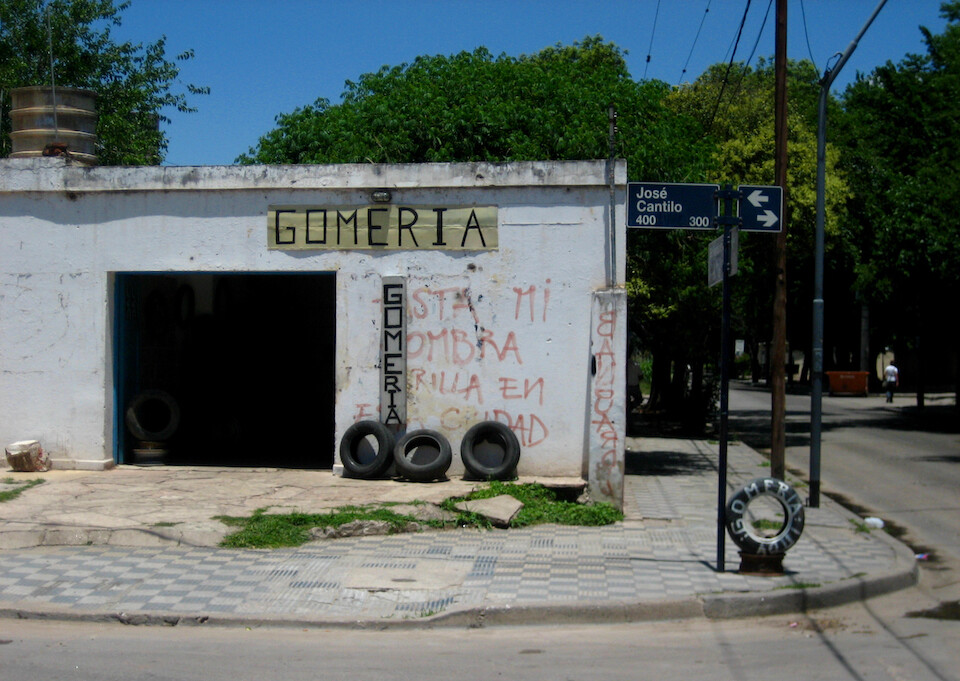
We met up with a bunch of Marco's friends who had planned an assado for the afternoon. Walking by a gomeria, which is a tire-repair place in Argentina (goma referring to rubber, which comes from 'gum'). This highlights the uniqueness of Argentina's Spanish, which is markedly different from the other Hispanic countries, being influenced by the large Italian influx in its early days. In pronunciation, one big difference is how the double 'L' is sounded, where it has a 'y' sound in most other countries, it takes on a 'shay' sound here.
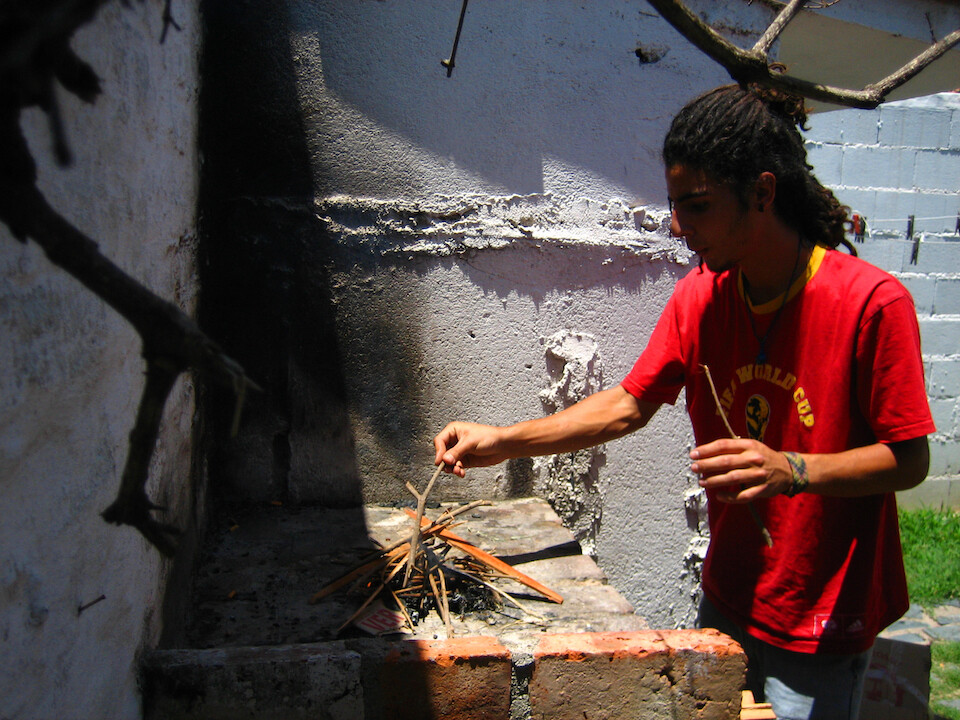
An assado (barbeque) is an essential part of Argentine culture and the primary way to celebrate for any occasion.
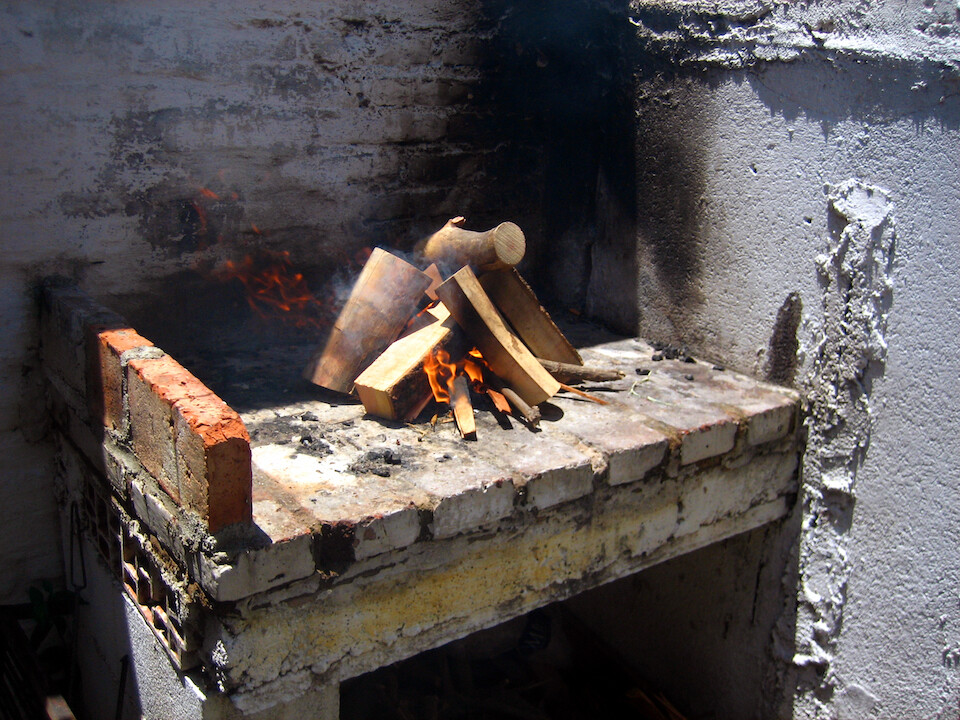
Through my travels, I noted how every self-respecting Argentine male had to know how to start a fire and get the coals ready for grilling the meat. The place for the assado was always a simple flat brick surface, which a grill was placed on.
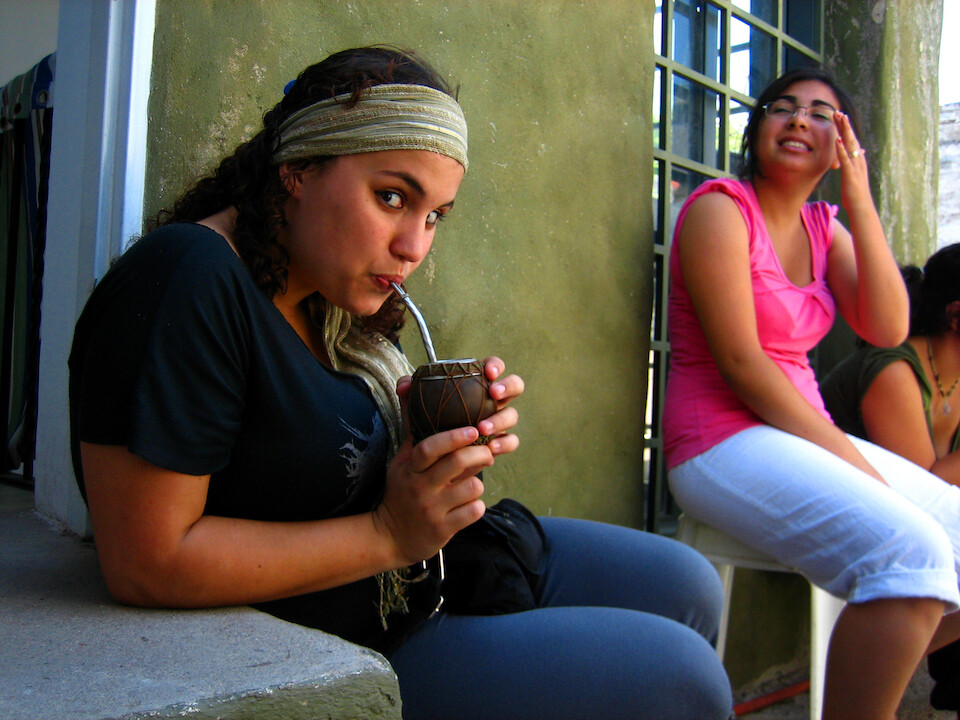
A big part of an assado is socializing and drinking maté while the coals get ready. Yerba is the dried leaf that is primarily grown in Paraguay and surrounding areas and drinking it as a tea has been part of the culture since the early days. It has a slightly bitter taste, which I enjoy. And the significant thing about maté (the act of drinking yerba) is sharing it with friends and passing the maté gourd around. In western cultures, drinking out of the same metal straw as strangers might be seen as unhygienic, but there's no real harm and actually, being exposed to foreign bacteria helps keep your immune system strong.

Yerba maté and meat on a grill. This concisely sums up Argentina's gastronomy.

Along with chunks of beef and sausage, there was a slight nod to vegetables. It was interesting what they did with the bell peppers, cracking an egg into its cavity.
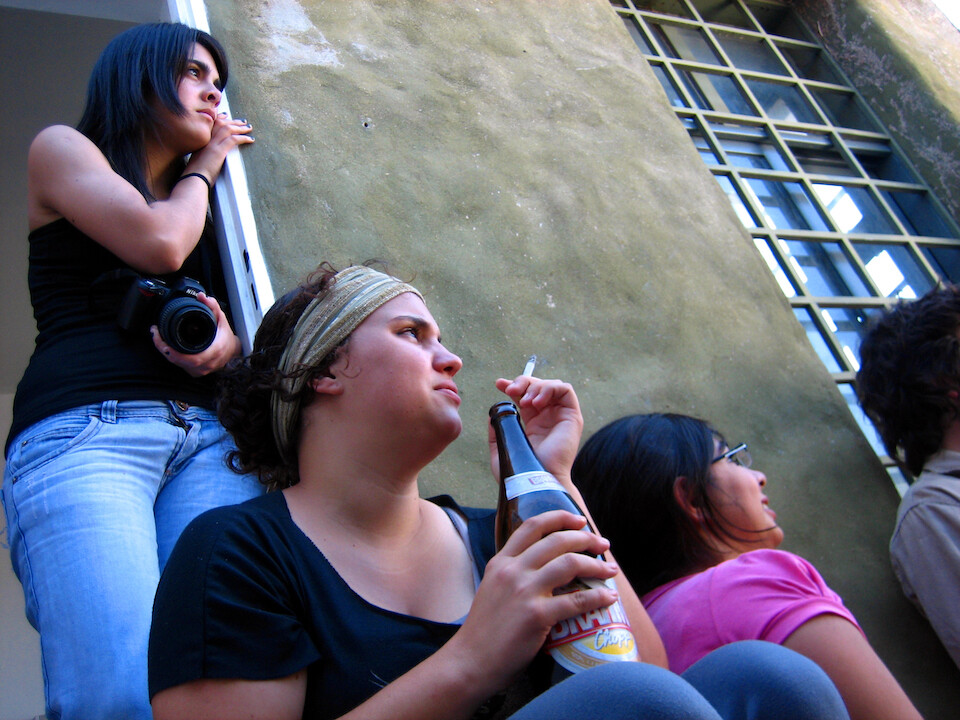
Most of the Spanish was too rapid for me to follow, especially with their distinct accent, so I kept myself busy by trying to capture their emotions.
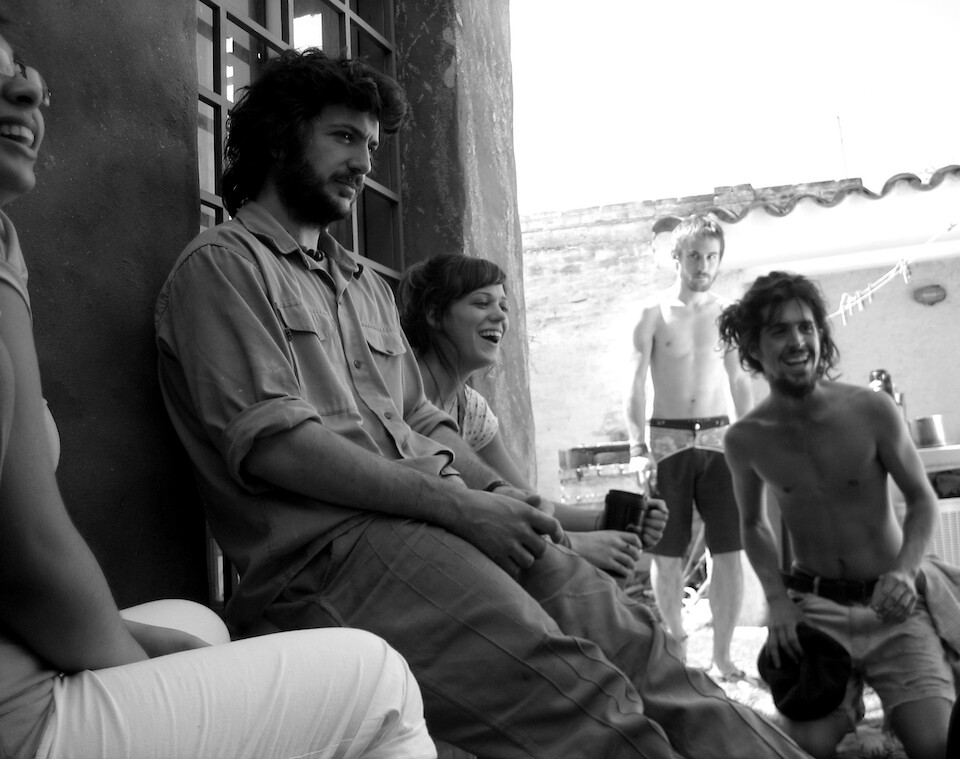
I followed the gist of the conversation, ranging from heavy political discussion to the usual college life topics.
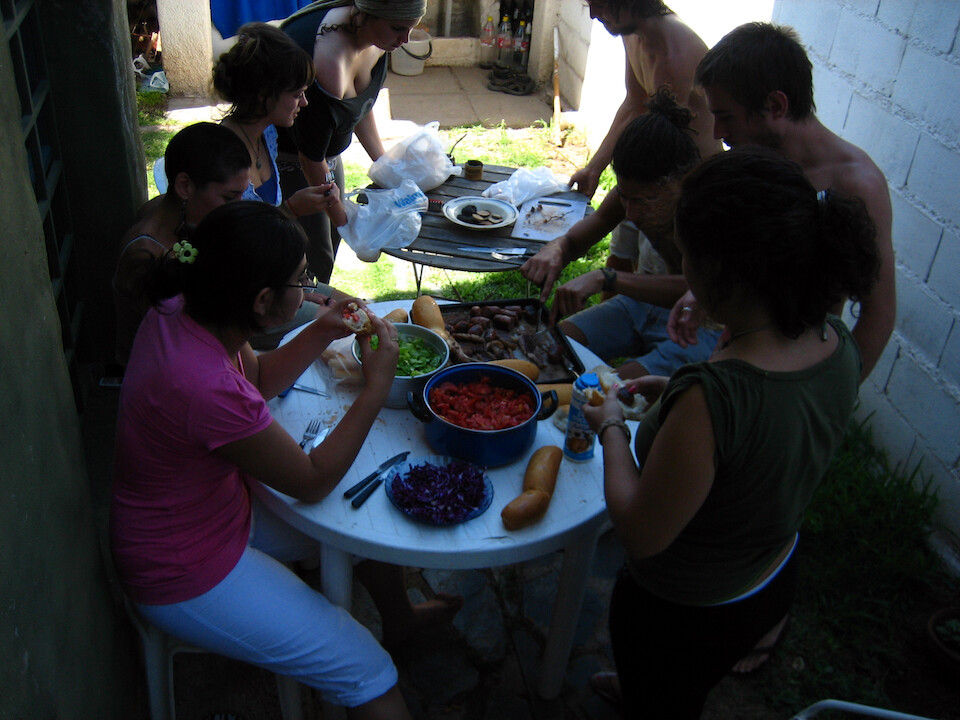
When the meat was ready, everyone pounced on it and wolfed down.
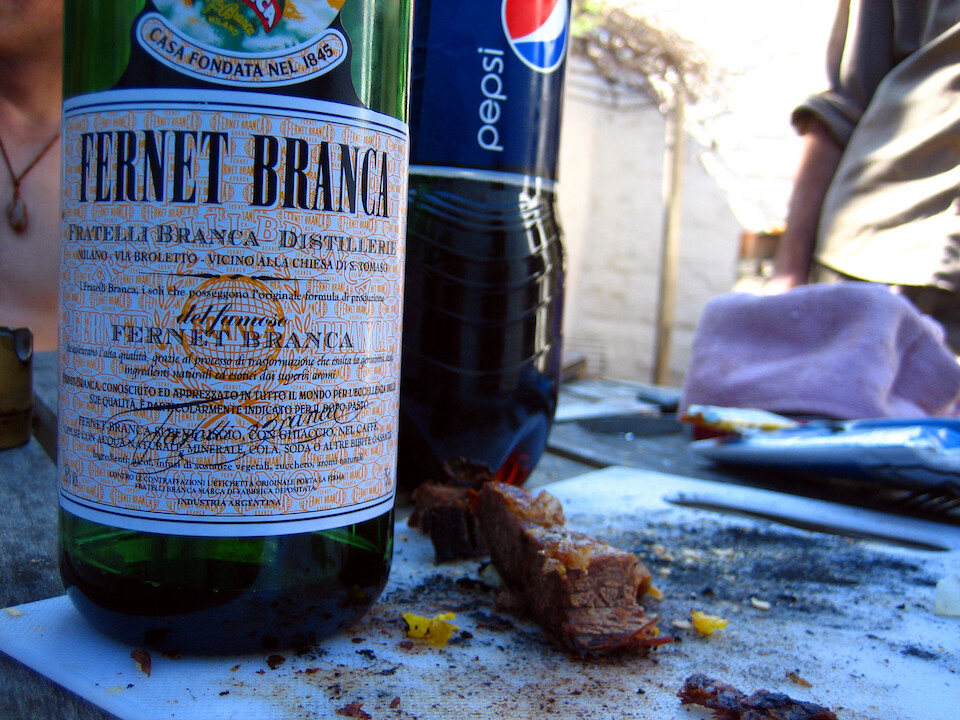
To wash the meat down, this is the alcoholic drink of choice in this area, Fernet. It's tastes like cough-syrup (admit it, everyone liked the taste of it as kids) and it's always mixed with a cola drink.
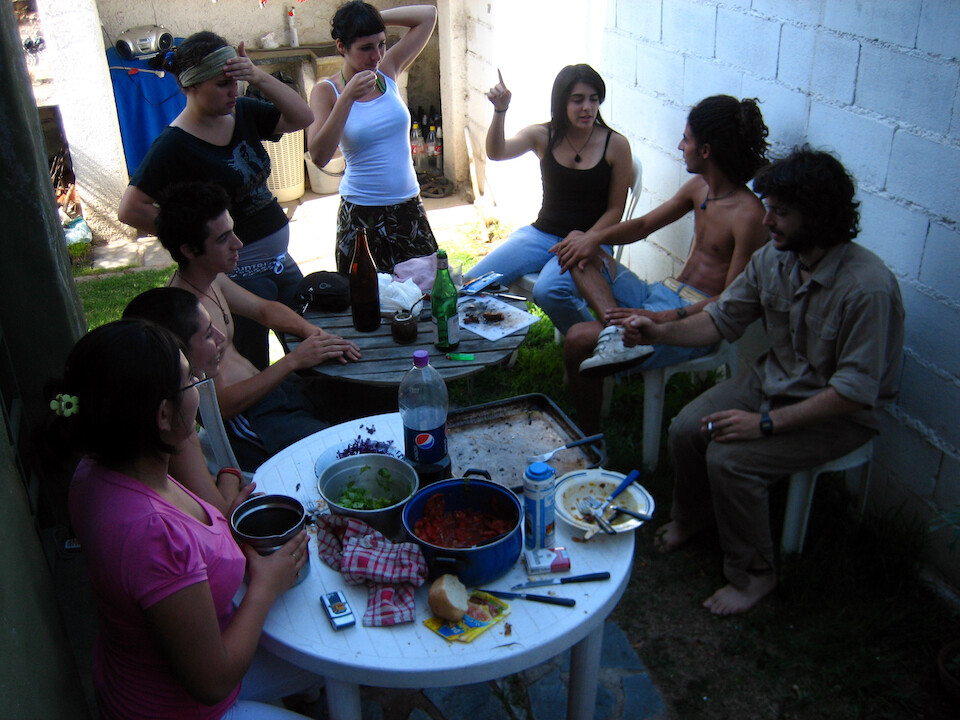
And the meat vanished just like that with the conversation resuming and carrying on into the late afternoon.
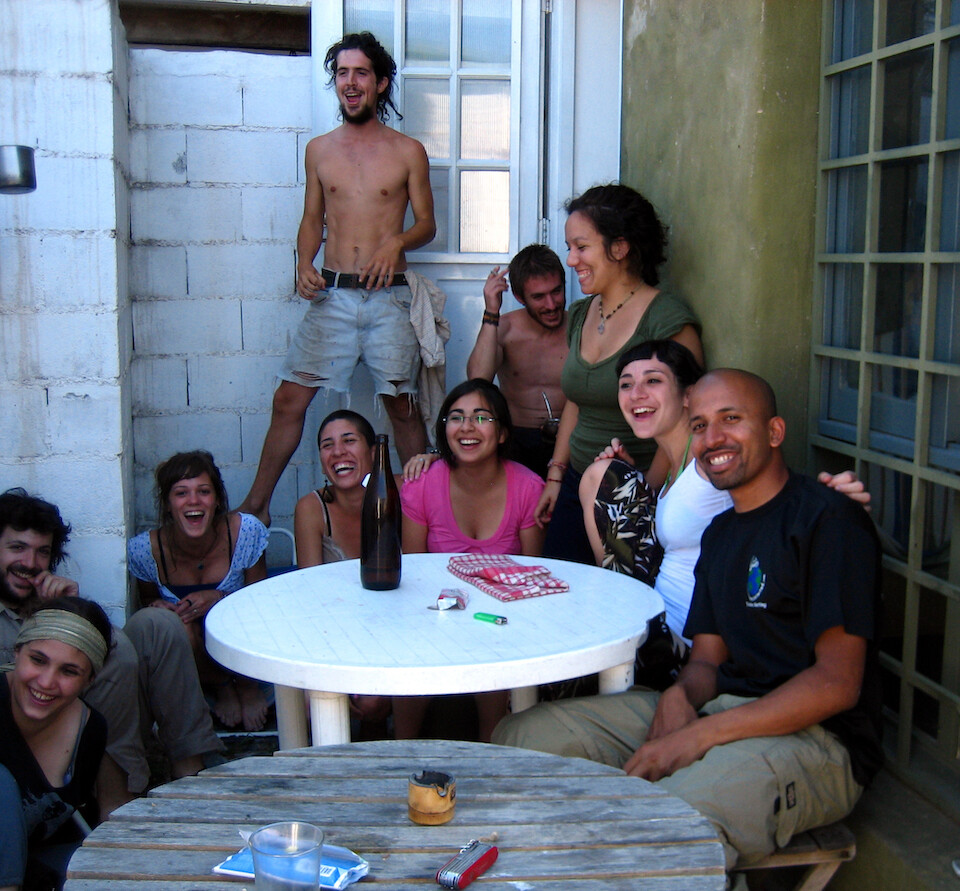
I had to leave and thanked them for sharing this most intimaté of Argentine experiences with me.
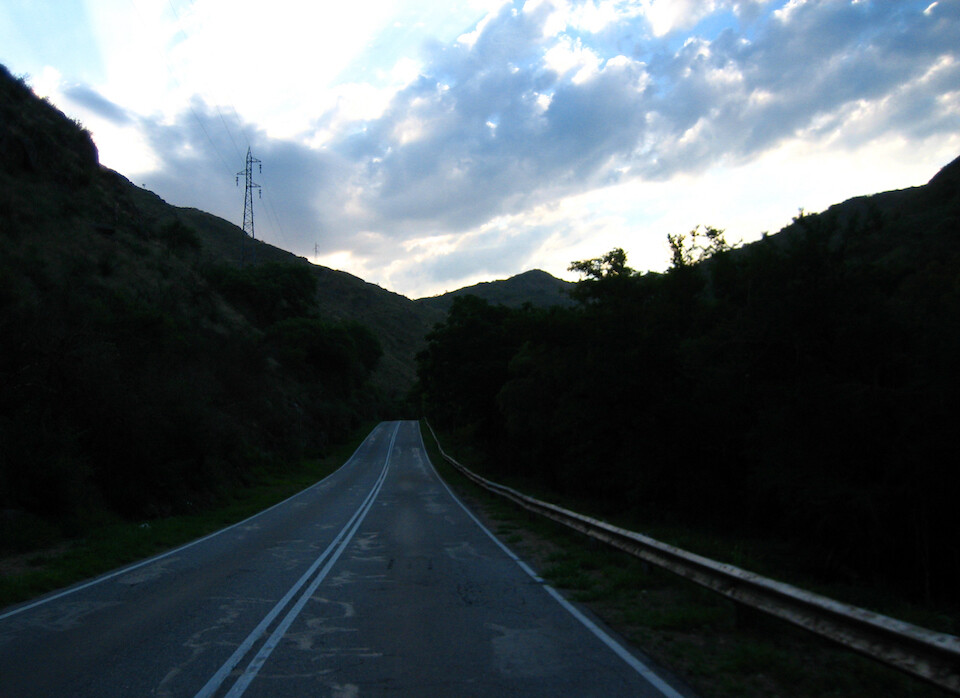
The terrain starts getting hilly from Cordoba and I was told to check out the mountains in the surrounding area, from the lakeside town of Villa Carlos Paz. After a few days there, I turned north towards Bolivia. There's concrete freeway heading to Villa Carlos Paz from Cordoba, being the weekend getaway for the city-dwellers, but there's also a nice route through the surrounding hills.
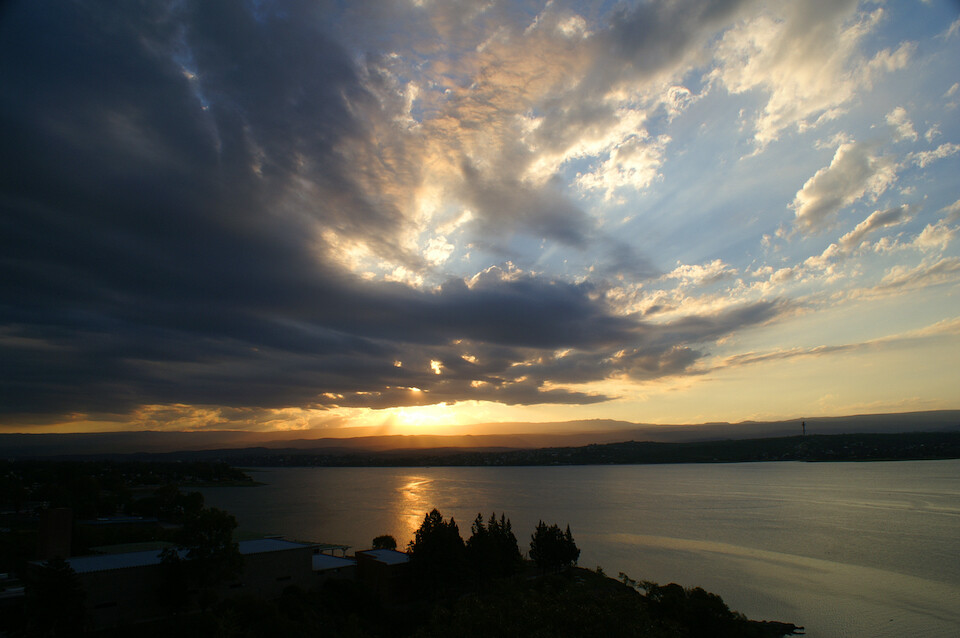
Taking in the sunset over Lago San Roque and looking towards Carlos Paz on the southern shores.
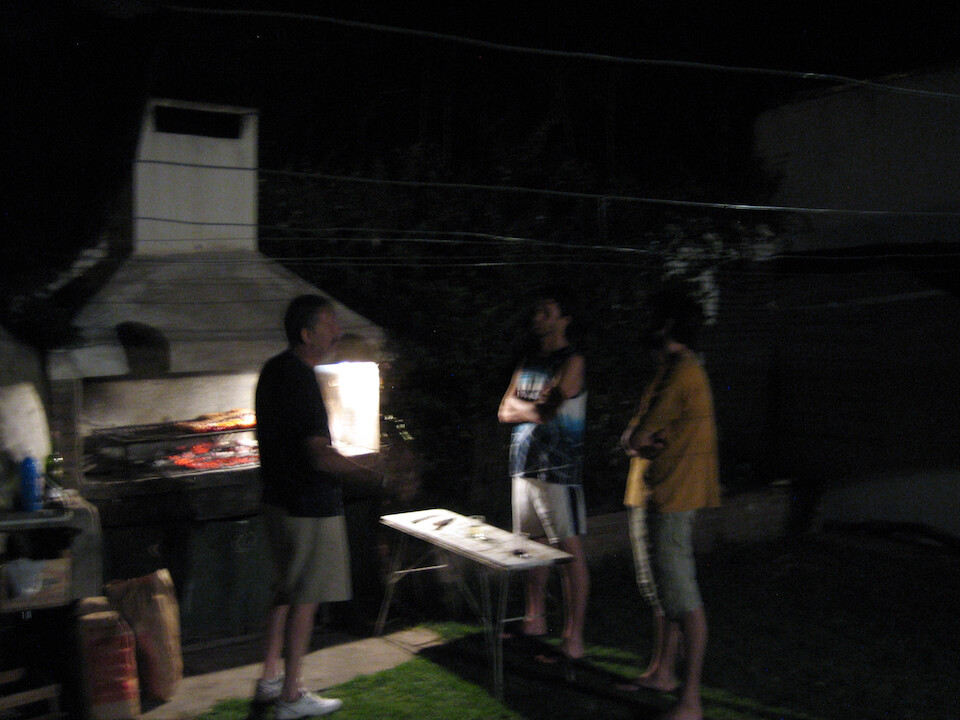
I stayed with Facundo (center) and along with his father and brother, they run a small hotel in town. He was intrigued by the idea of CouchSurfing and they have a room set aside for surfers.
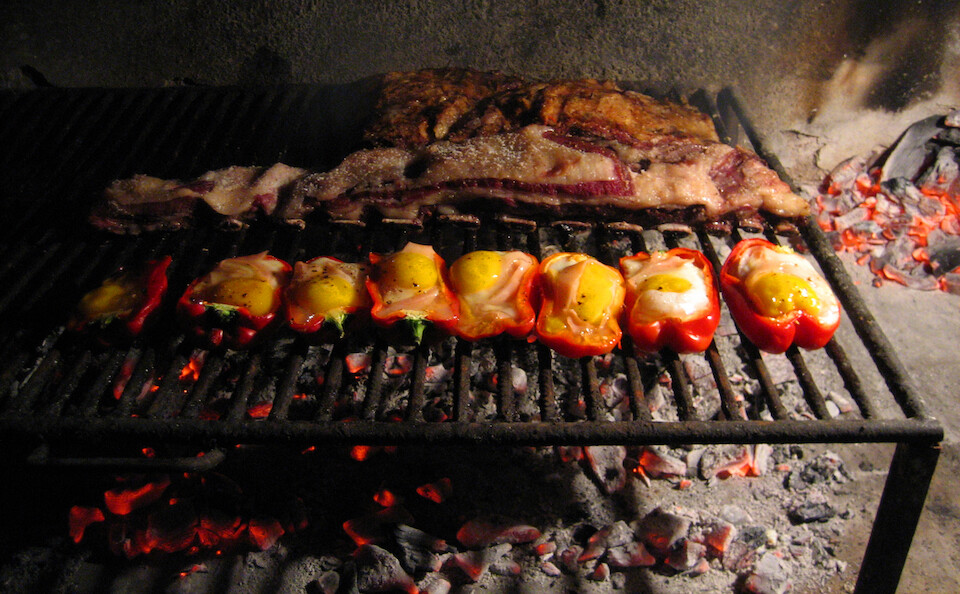
For dinner, you guessed it, another assado (that's two assados in one day). They were also doing the same thing with the eggs in the bell peppers with a huge chunk of ribs grilling behind them.
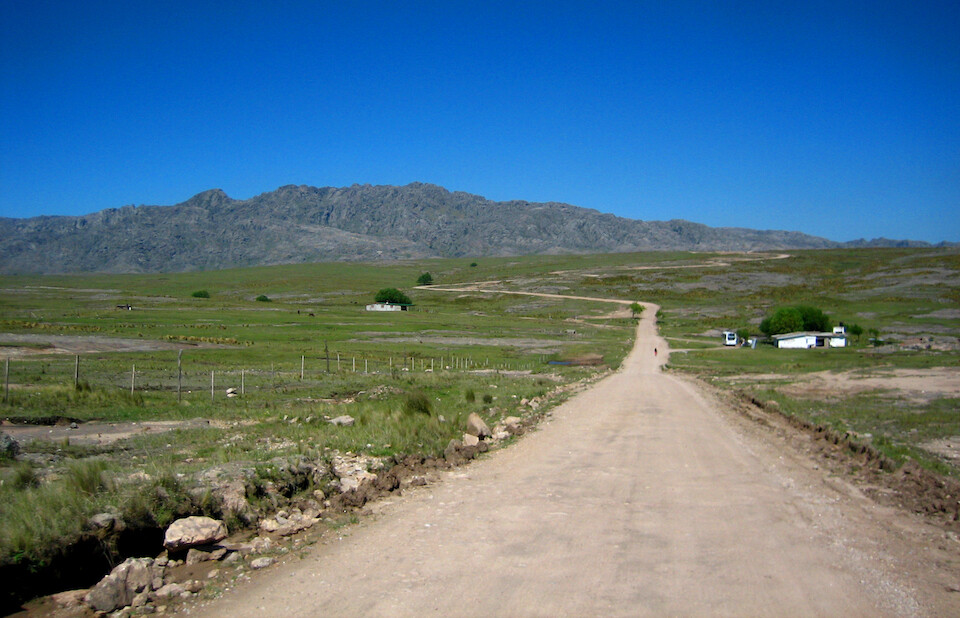
A post on HorizonsUnlimited informed me of a route up into the mountains and I went on a day ride to check it out.
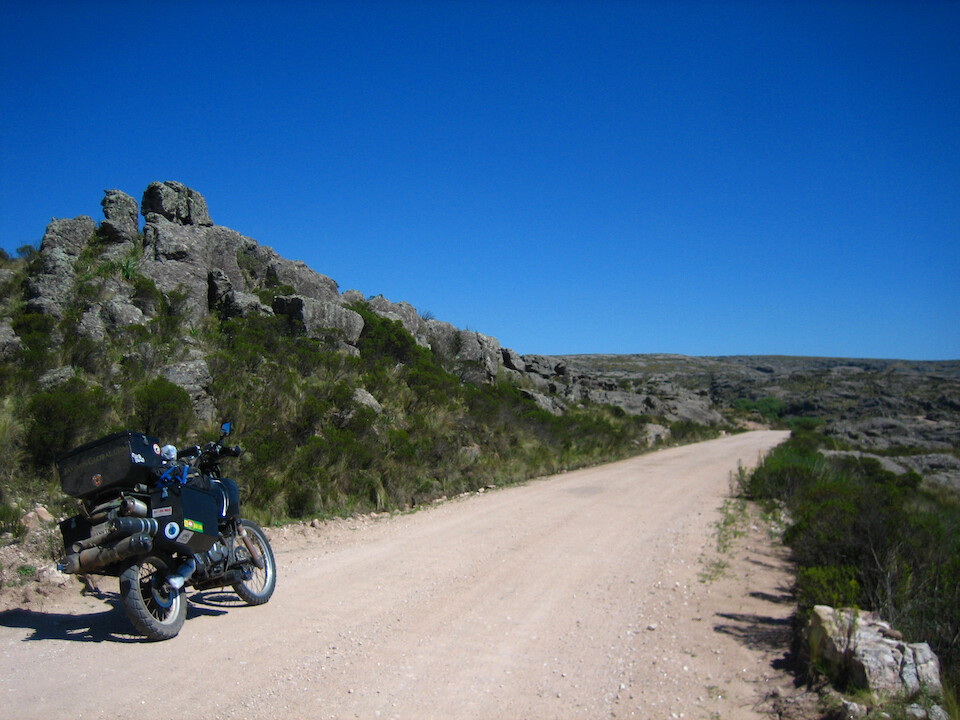
This was the first off-road riding since the end of the TransAmazonica and I was eager to see how the suspension tune up in São Paulo would affect sanDRina's handling.
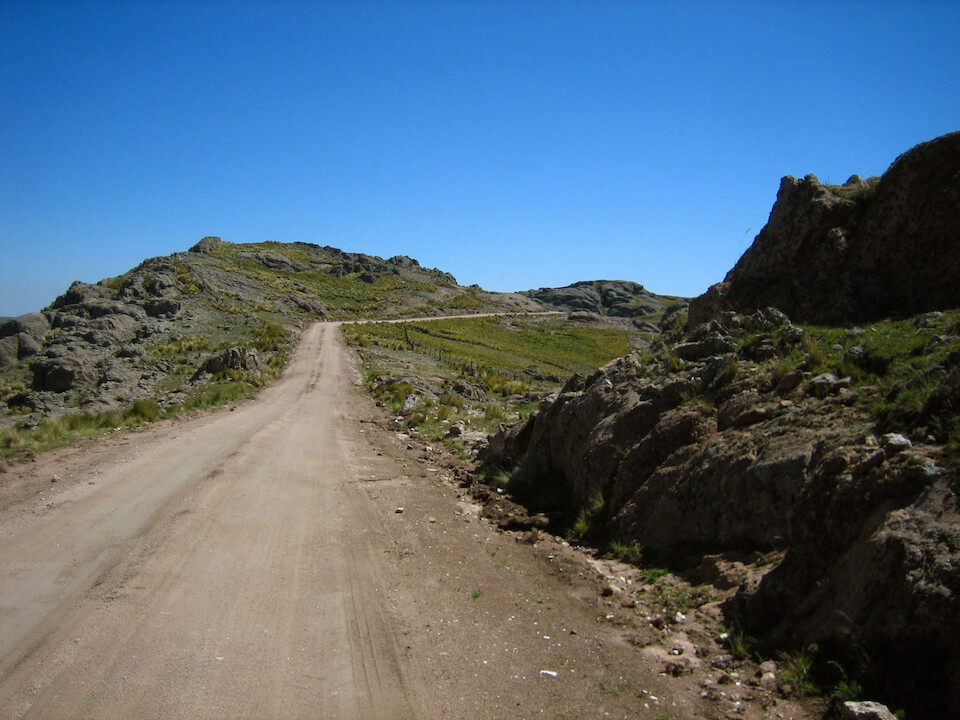
It was a nice route, with hard-packed mud roads and felt good to gain some elevation again since descending the Andes in the Bolivian Yungas.
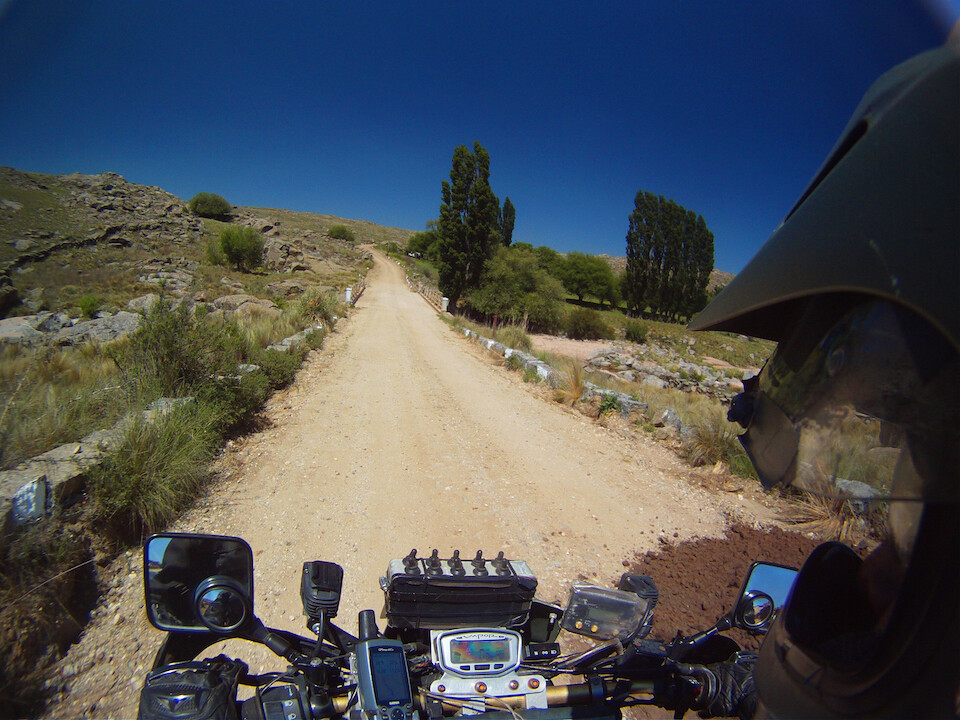
The route was devoid of traffic and passed through small farms and villages.
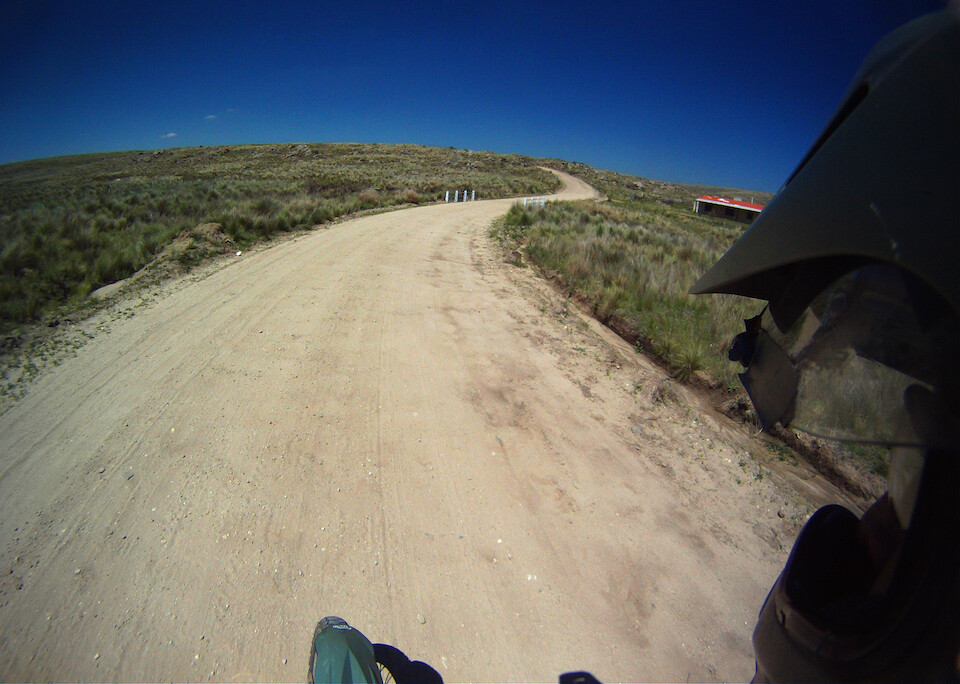
It felt good to be standing on the pegs and letting sanDRina dance as we turned through bends in the road.
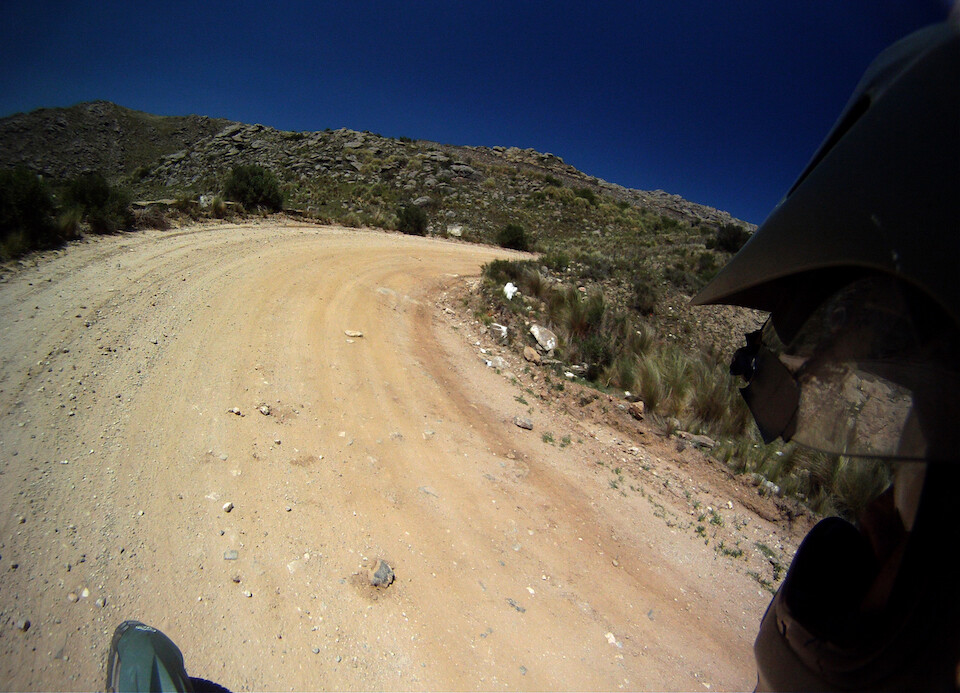
The suspension felt more responsive and I was confident in taking her through the demanding Lagunas Route through southwest Bolivia, my next destination.
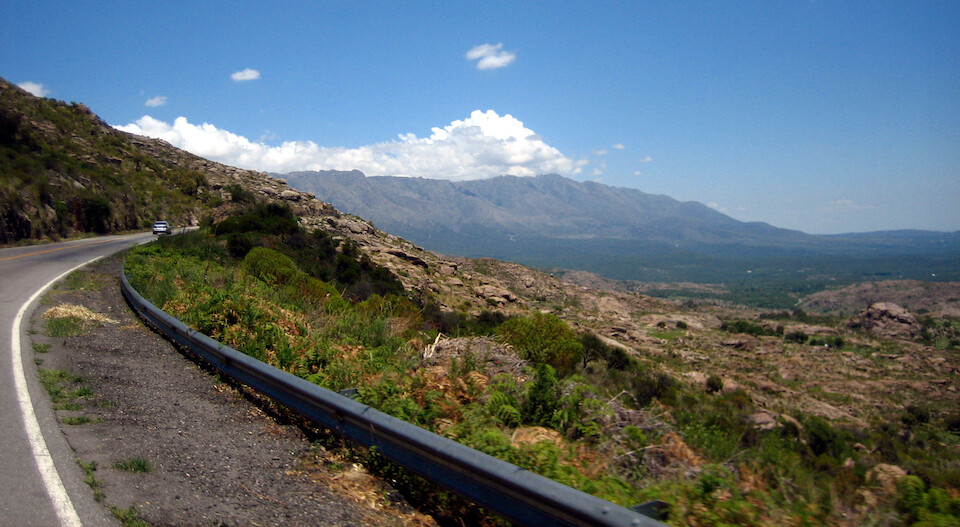
It was good to put her through her paces and on the tarmac back down the valley, the transmission was singing through the gears and with most of my load left behind at Facu's place, it was enjoyable to have a lively and responsive bike.
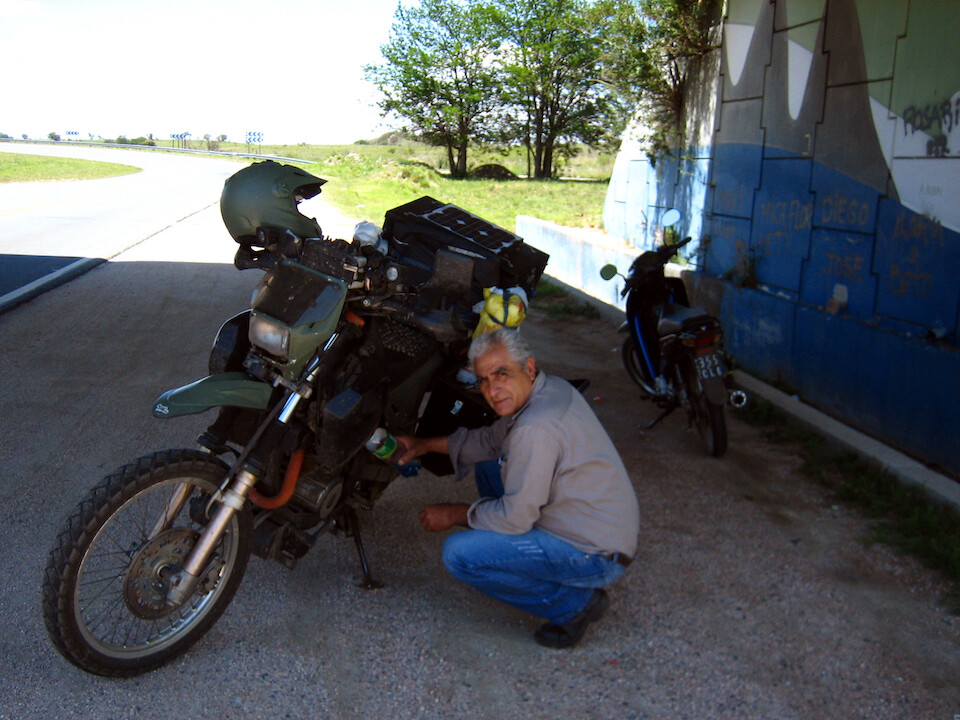
A few kilometers from town, this man waived me down and said he had misjudged and run out of fuel and needed about half a liter. I knew carrying around the oil tanker that is the Aqualine Safari 40 liter (10.7 gal) tank would come in handy. He offered to pay but I told him to pay it forward as I was doing after all the help I've received on my travels.
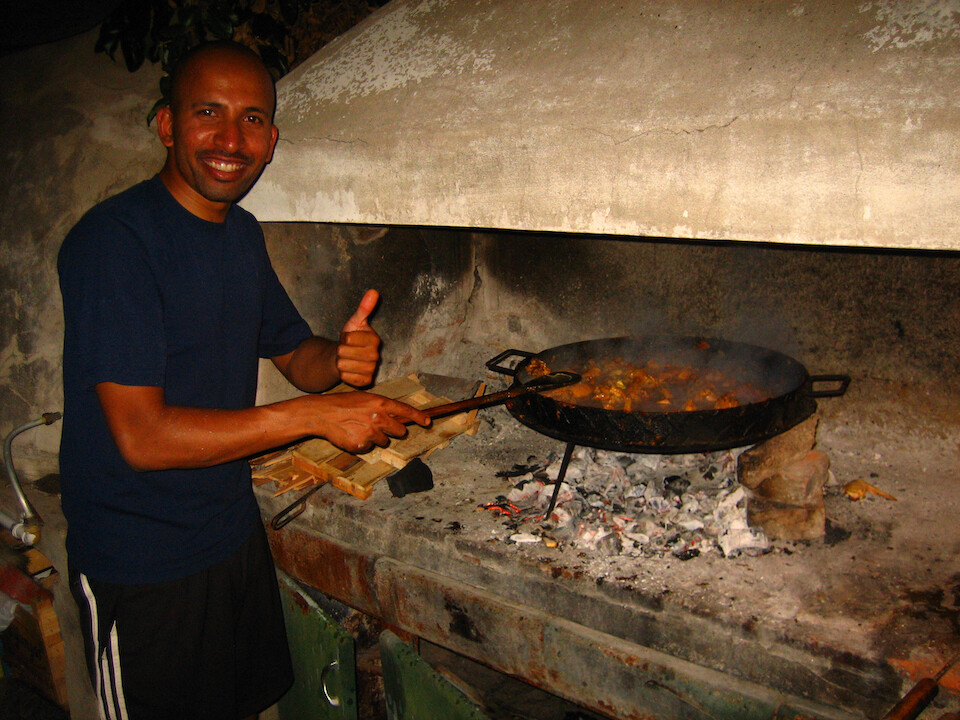
That evening, instead of another assado, Facu asked if I could prepare my chicken curry. And to put an Argentine twist to it, I prepared it in the assado area over coals and used a 'discko', which is a large metal dish used for making lamb stews. Having a strong fire with a thick pot (spreading the heat evenly) and being outdoors, this was the most fun curry I've prepared.
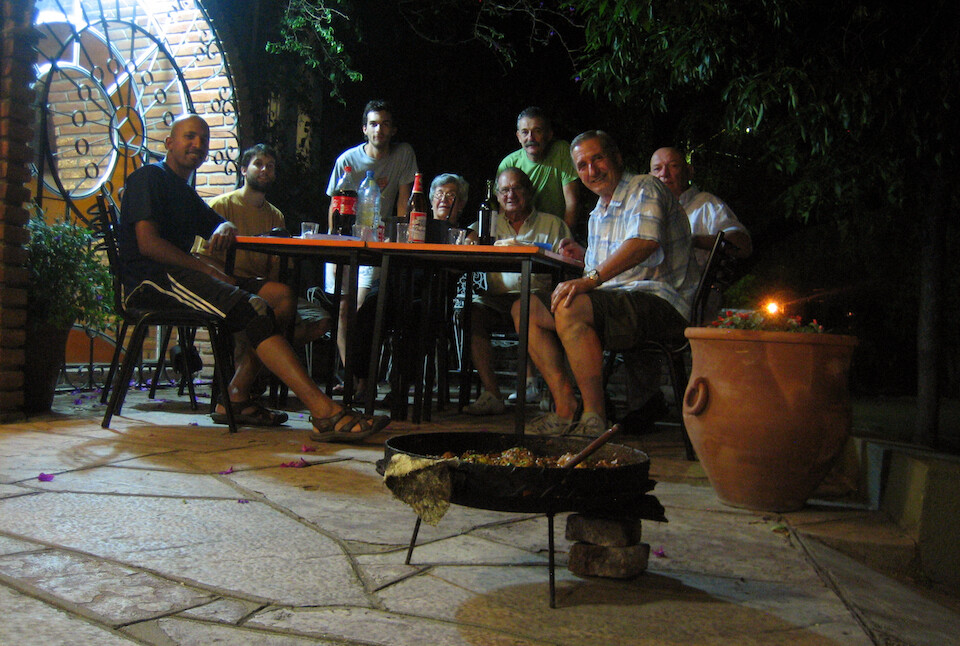
We ate on the patio and some of their friends were invited. A few of the elder guests were a bit hesistant about spicy Indian curries but were pleasanty surprised where their mouths weren't on fire, and yet they could taste the spices.
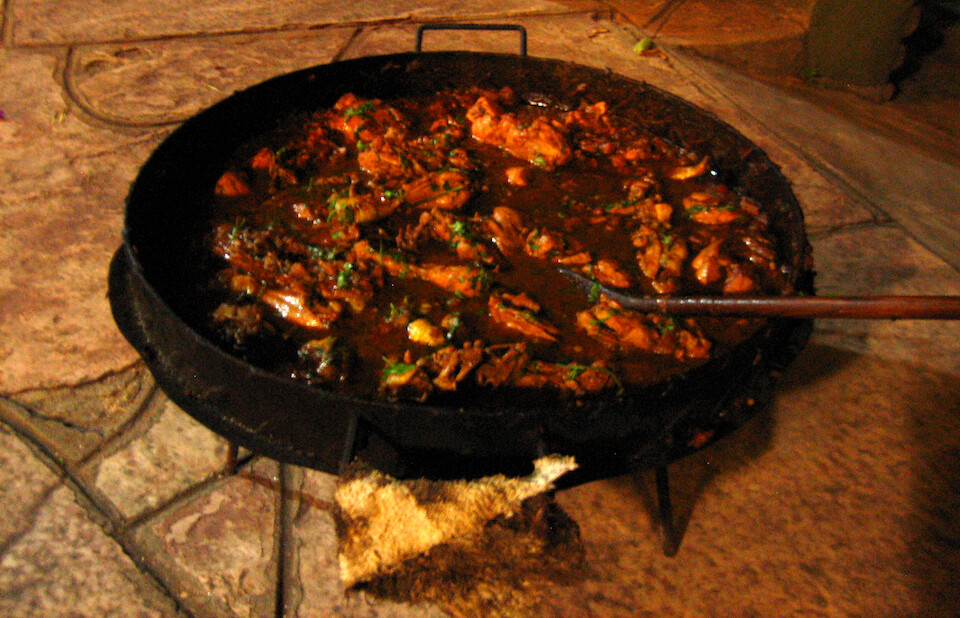
My best chicken curry to date. I think the smoke from the coals added to the flavour as well as the essence from the discko.
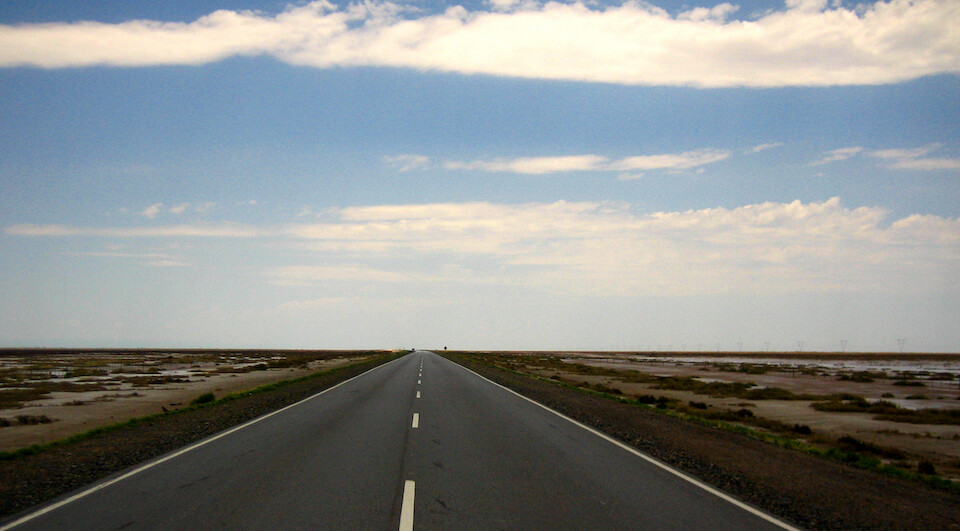
From there, I headed north towards Tucuman, which was a good 617 kms (383 mi) away on flat terrain.
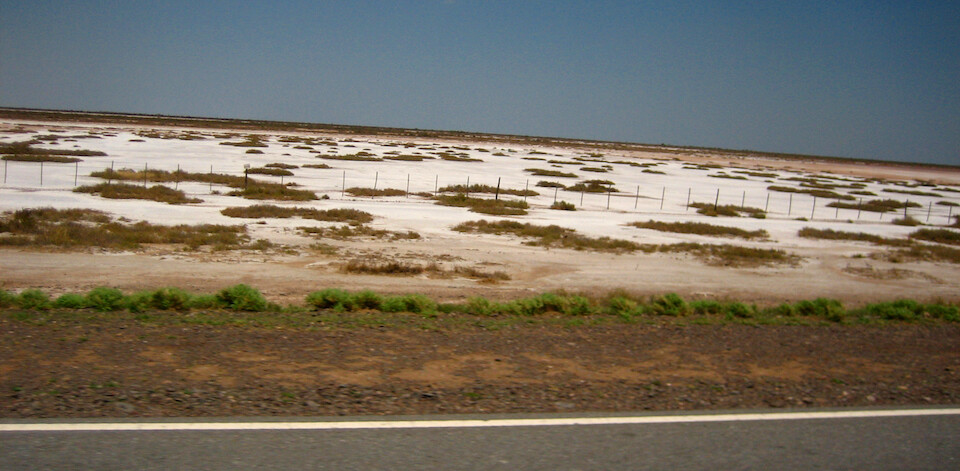
Passing by a salt flat on Ruta 60, the Salinas Grandes, which is different from the same-named salar near Jujuy. There wasn't much to see and public entry wasn't encouraged.
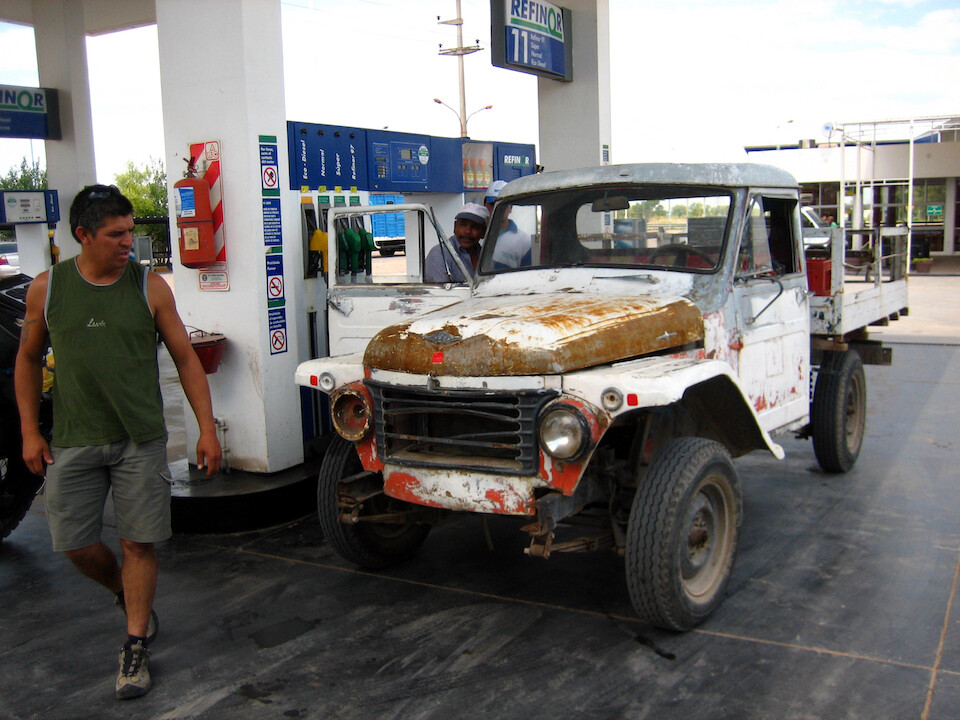
I was getting used to seeing old and beaten-up trucks around Argentina, but this classic Land Cruiser pickup truck takes the cake. Missing a headlight, bumper and maybe brakes, as well, but kudos for keeping it going. They don't make them like they used to. Petrol stations were not hard to come by in these remote areas and were usually at intersections of highways and I could use my credit card at most of them. All of them also provided free drinking water and the public water is safe to drink in Argentina. I wasn't even running it through my filter and had no problems. It's also a good way to introduce a light dose of the local germs to your body, so that the antibodies can prepare for a real attack when it happens.
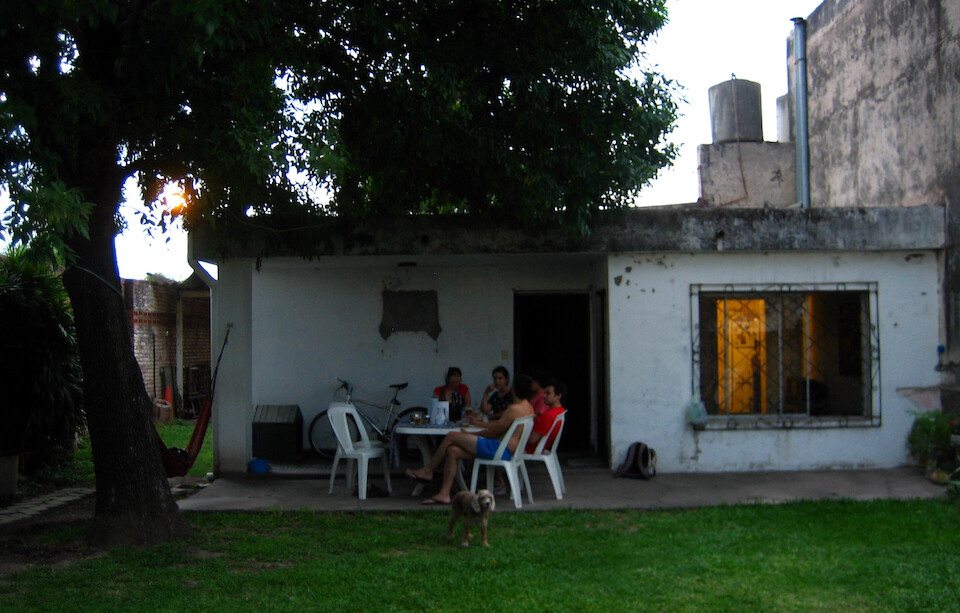
I stayed with Sebastian and Martin in Tucuman and we gathered at a friend's place for some beers and conversation.
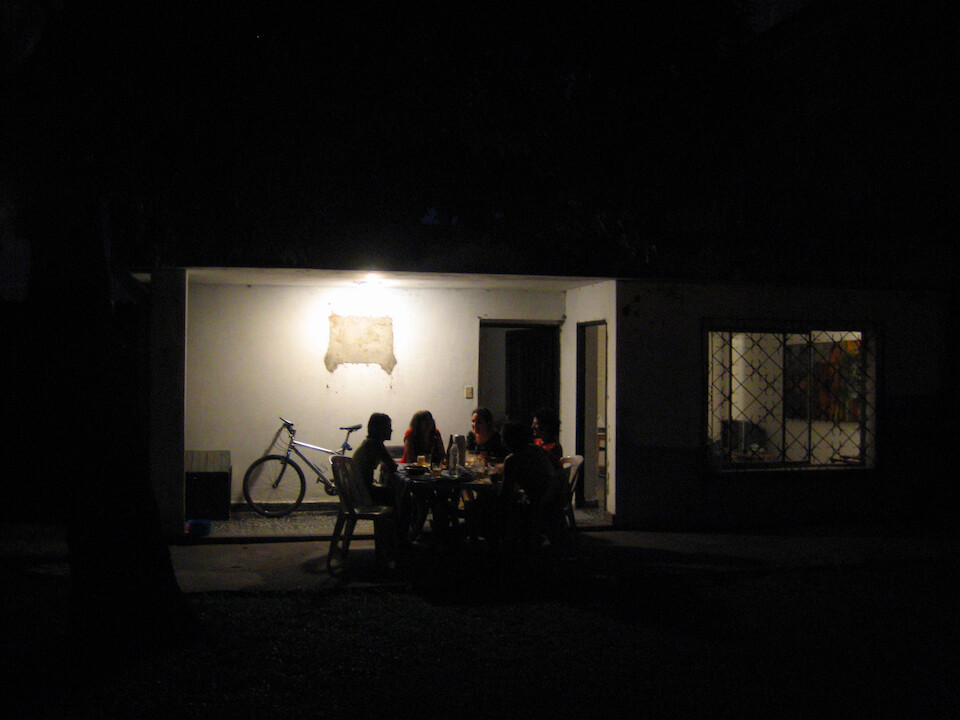
It carried on late into the night and by now, I was aware of the skewed daily schedule of Argentines, where lunch is had at about 3 pm and then dinner at about 11 pm or midnight, so I snacked before arriving. Their friend, Alejandro had driven from Mexico back to here in a VW van, so we compared some of our experiences.
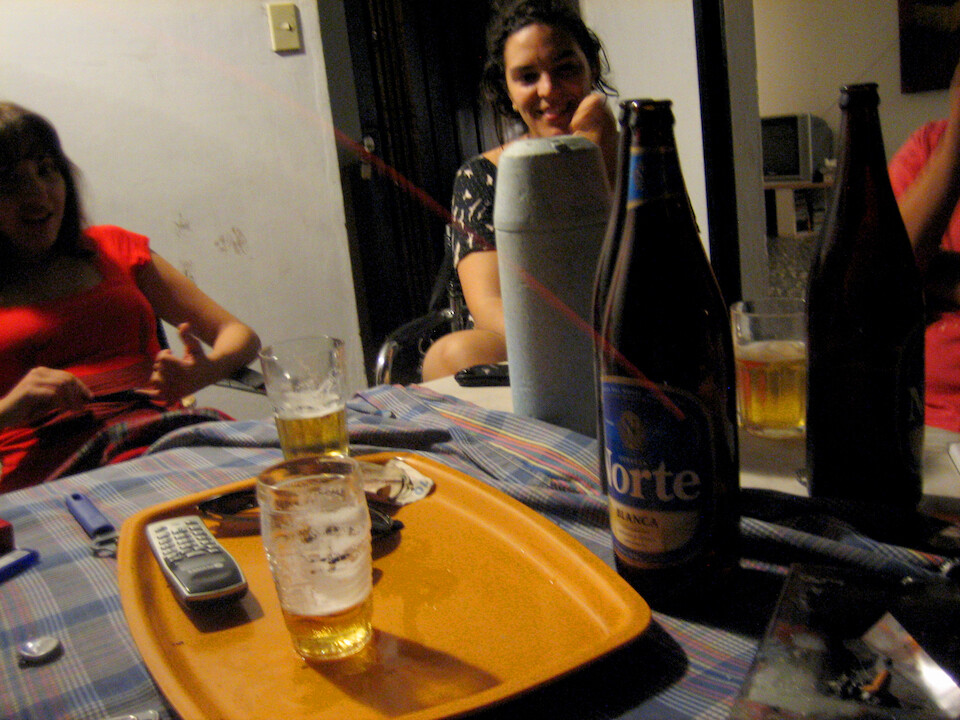
Over endless bottles of Norte lager, the conversation drifted from transcending left and right with regard to politics, to expected questions about India and they were impressed with my Spanish and ability to converse such topics in their language. By now, Spanish was back in the forefront of my brain, with Portuguese banished to the memory banks.
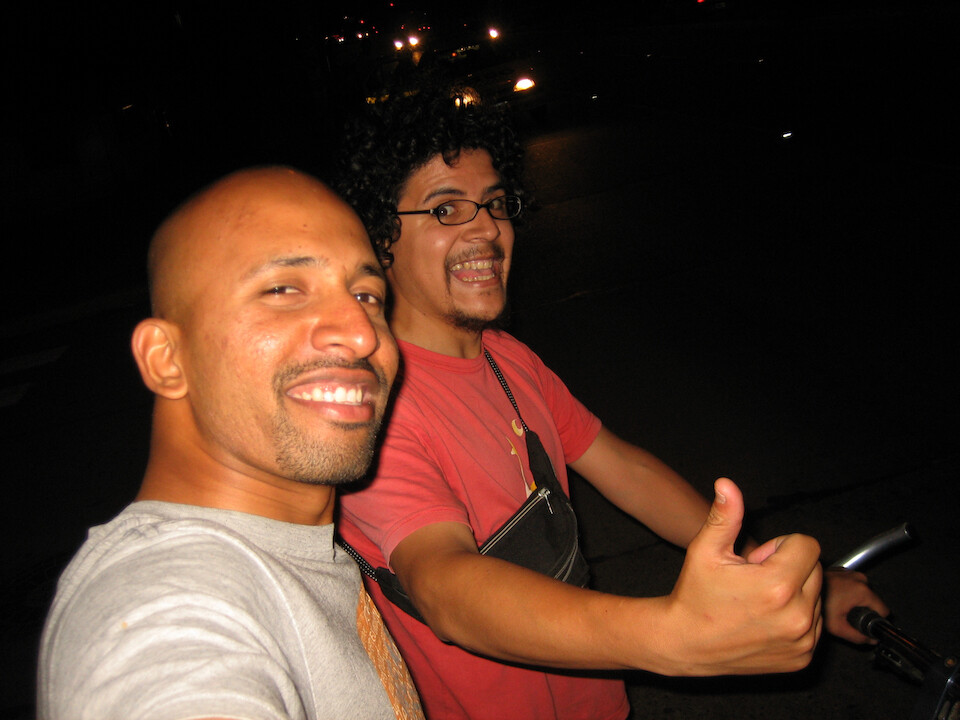
Instead of a boring taxi ride across town, Seba and I went two-up on his bicycle. It was rough, but memorable. At one intersection, we saw a dog get hit by a passing truck and then its limp body was repeatedly hit by a succession of cars. Quite a graphic image. We went out, in between traffic, and moved the carcass to the pavement. Seba is a history teacher and has back-packed all over Latin America. He noted that Tucuman's importance was that it was the place where Argentine independence was declared in 1816.
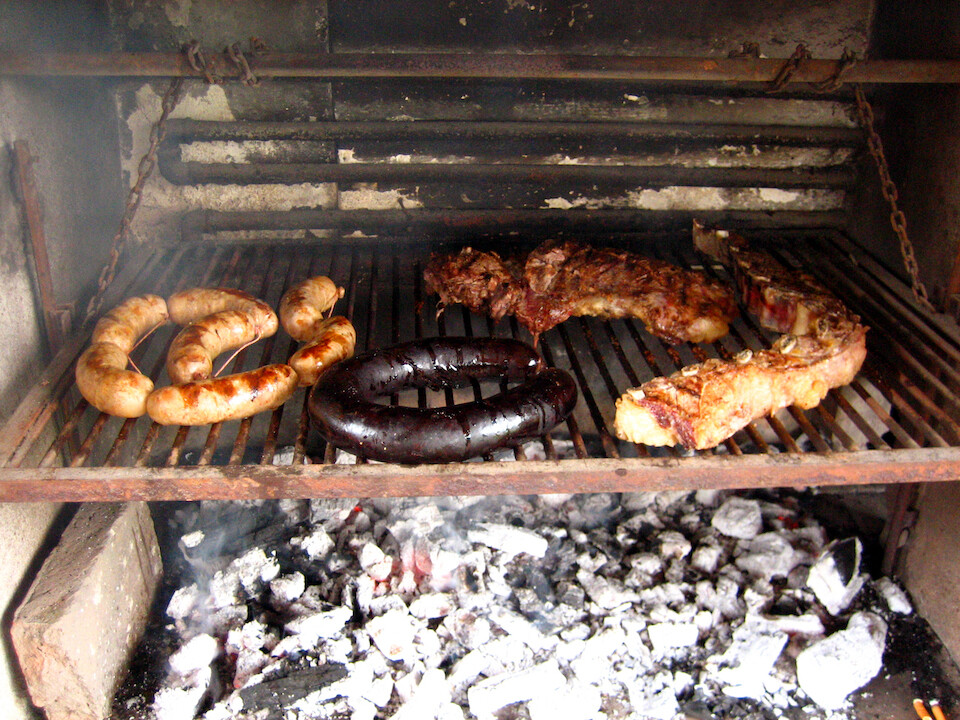
The next day was Sunday, and Martin prepared an assado at his mother's place. The dark sausage is a pork's blood and rice sausage. Tasty, but loaded with cholesterol.
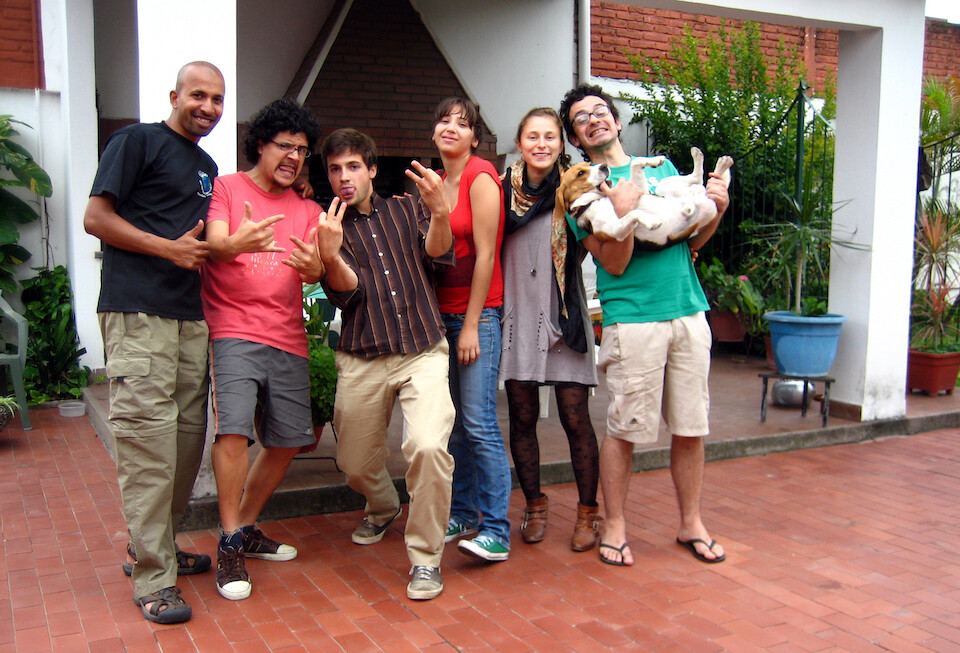
Group shot after stuffing ourselves. Martin is on the right, holding up his pet beagle. He's an environmental engineer, working for a wind turbine company and travels to Costa Rica often. We had some good discussions regarding sustainable development and the recent UN climaté conferences, which directly affect his work. His girlfriend is Irena, in red, and the other couple are French architecture exchange students.
Next: Argentina, Part 3: The Colorful Hues of Salta and Jujuy
Previous: Argentina, Part 1: The Northeast into Buenos Aires